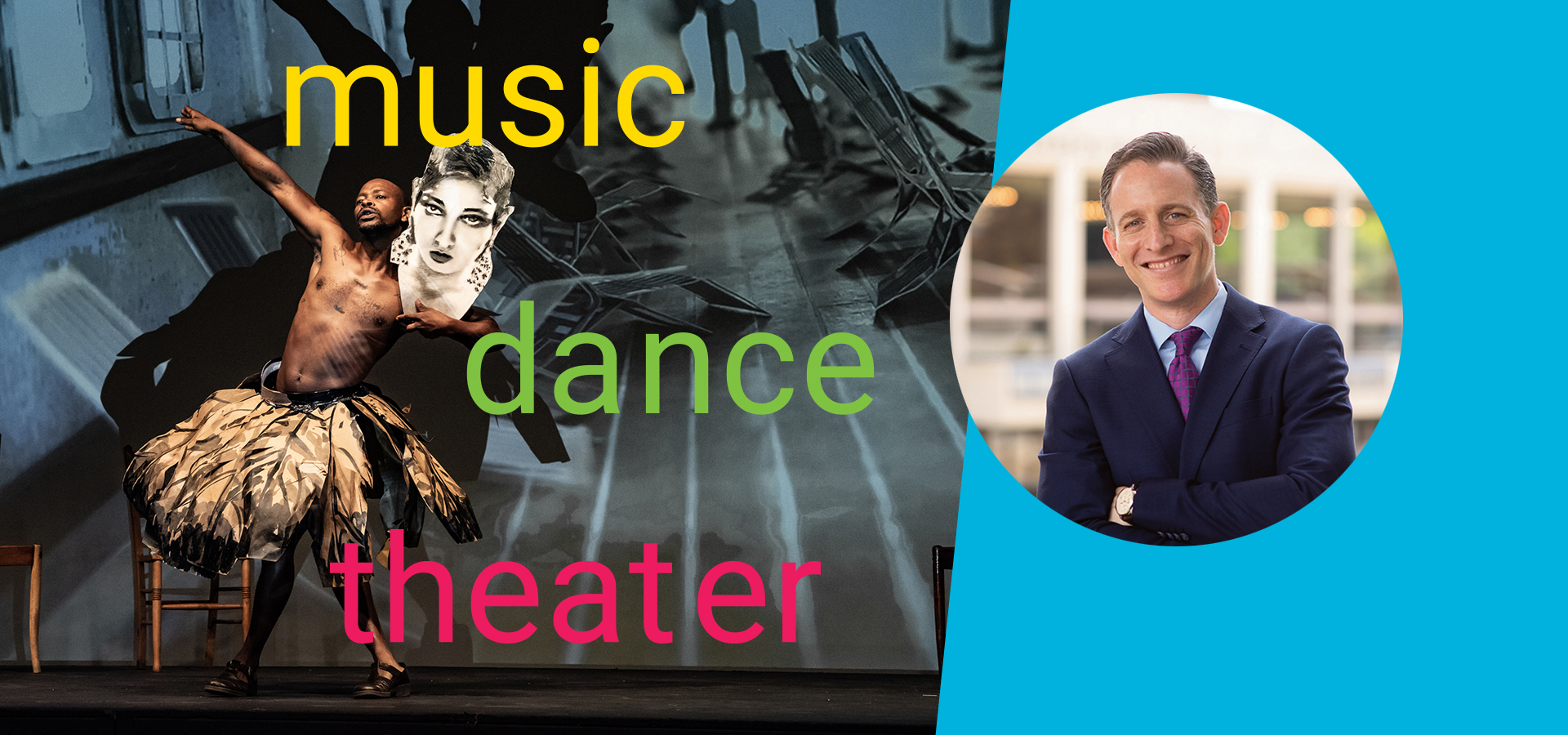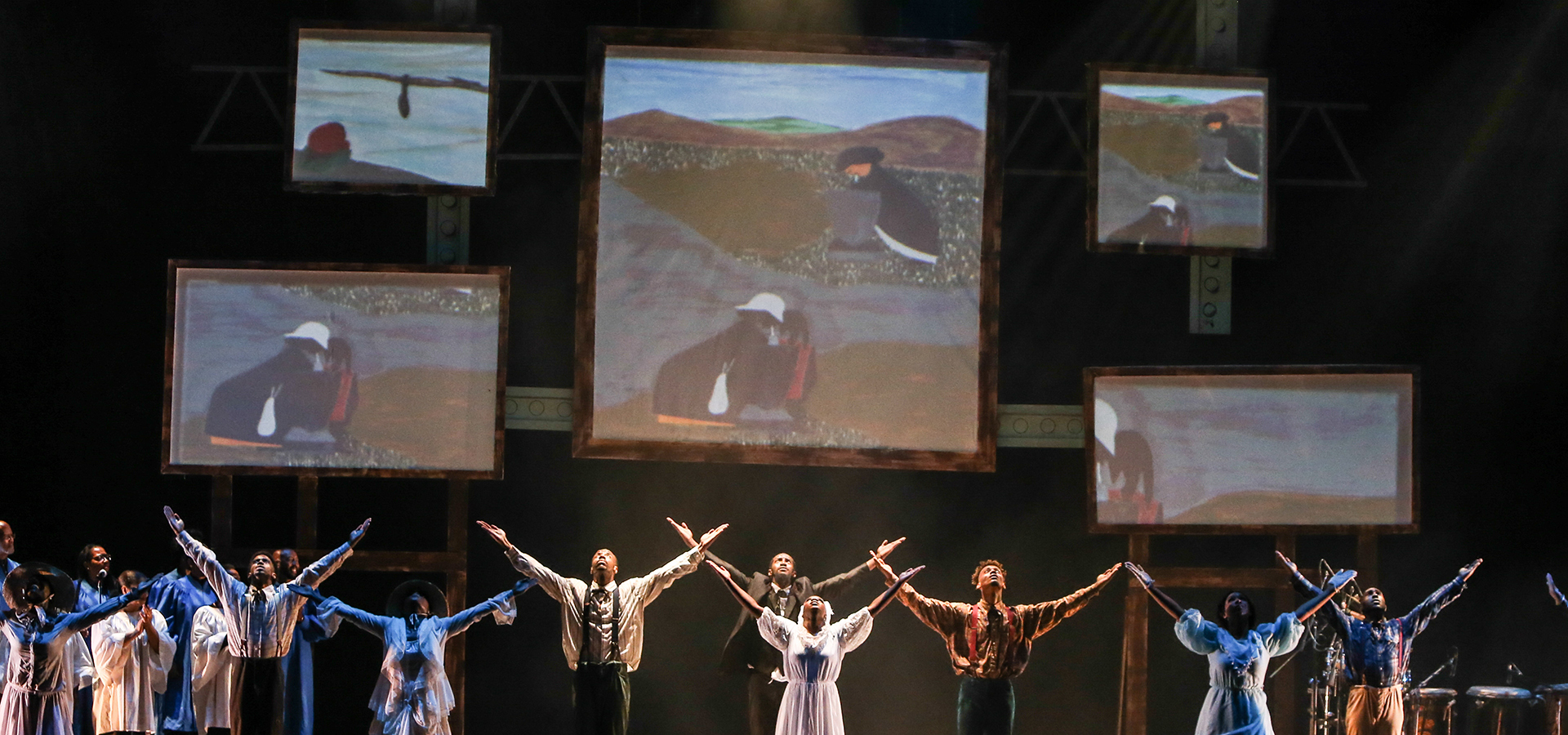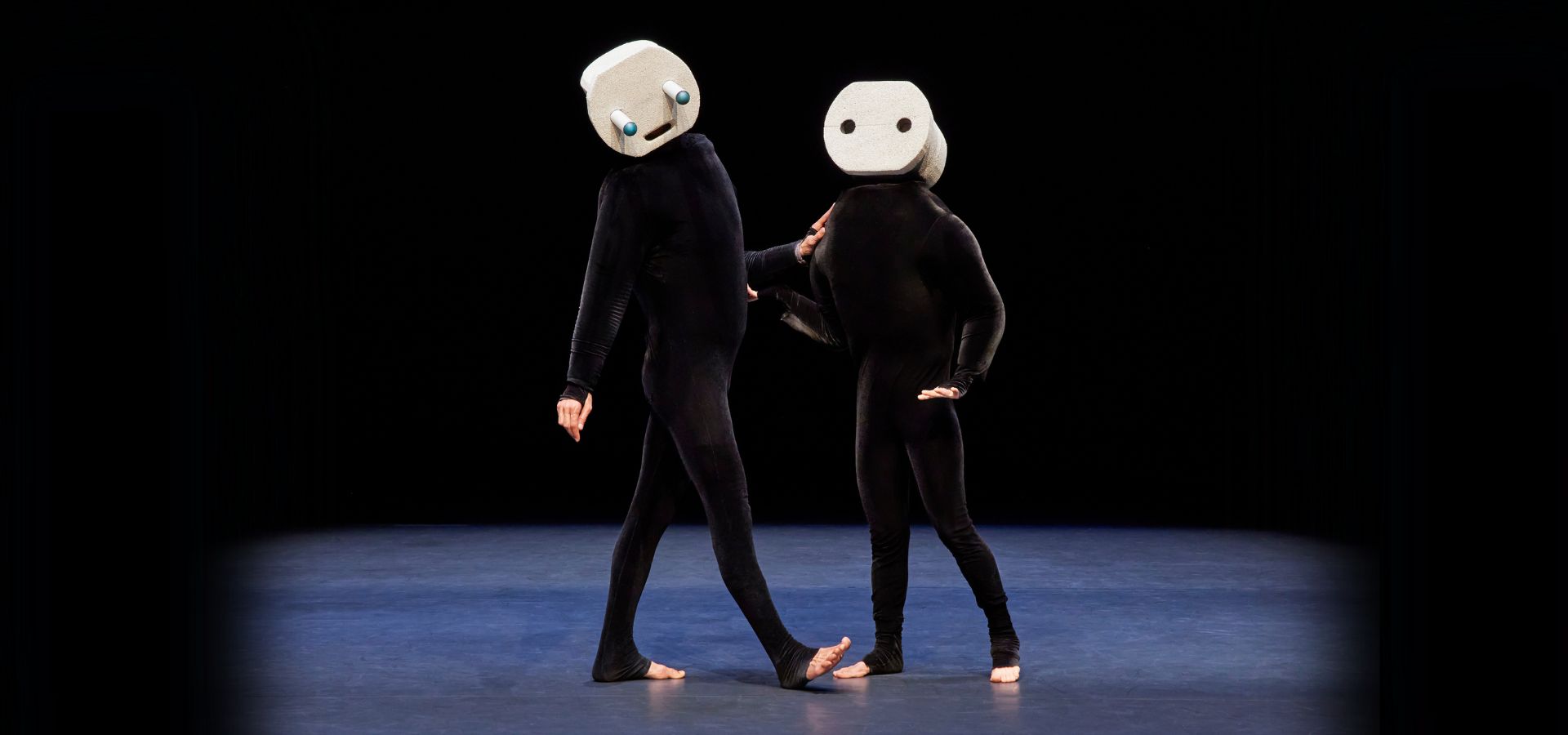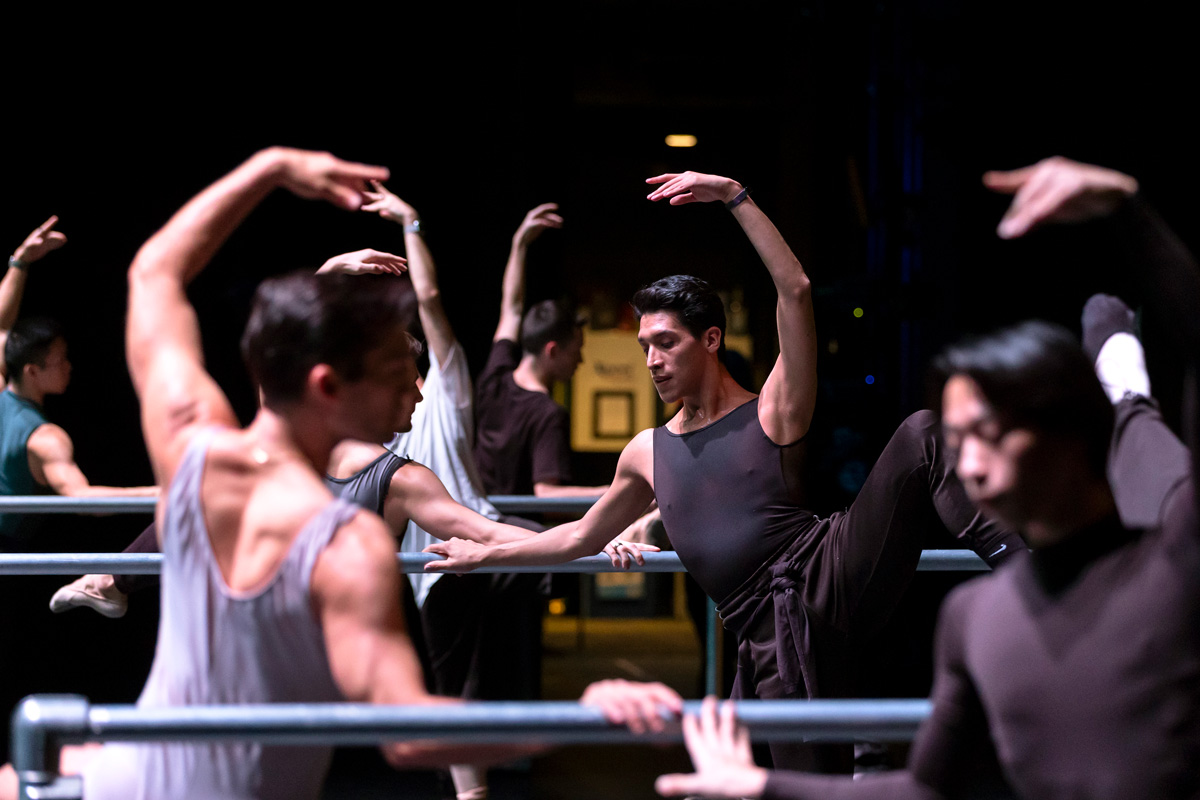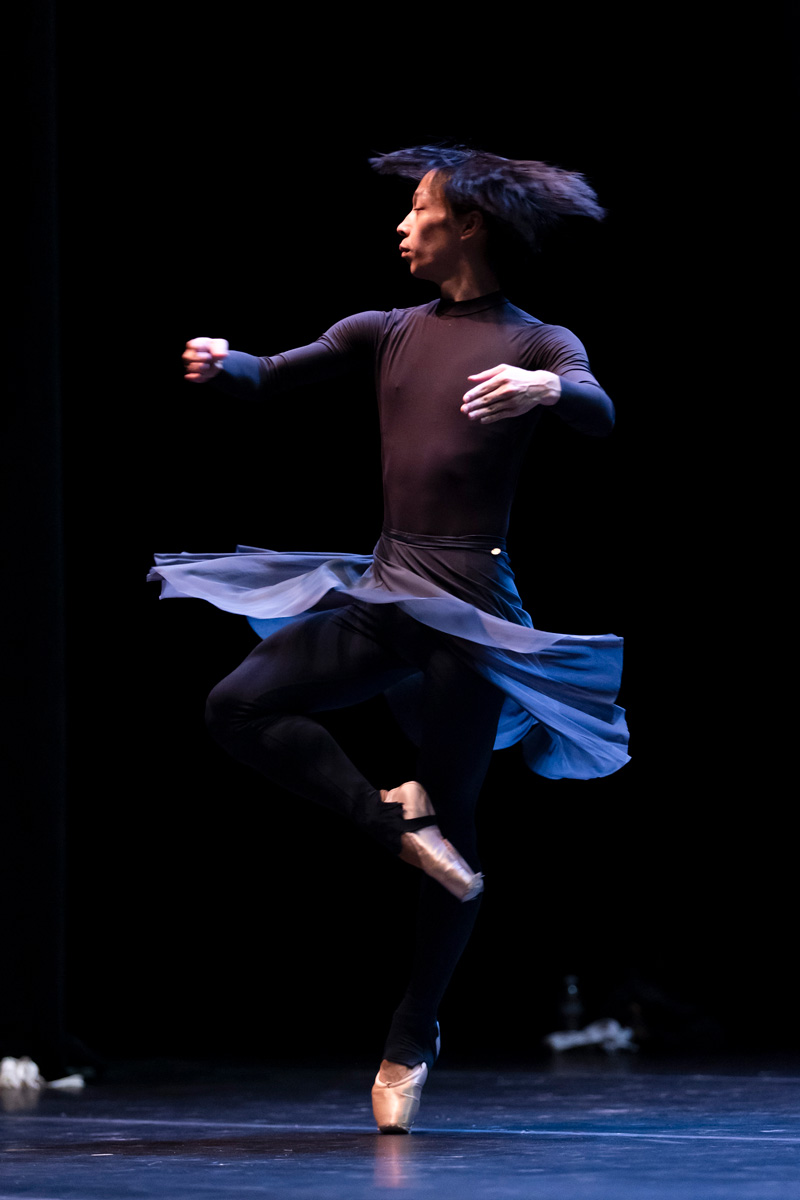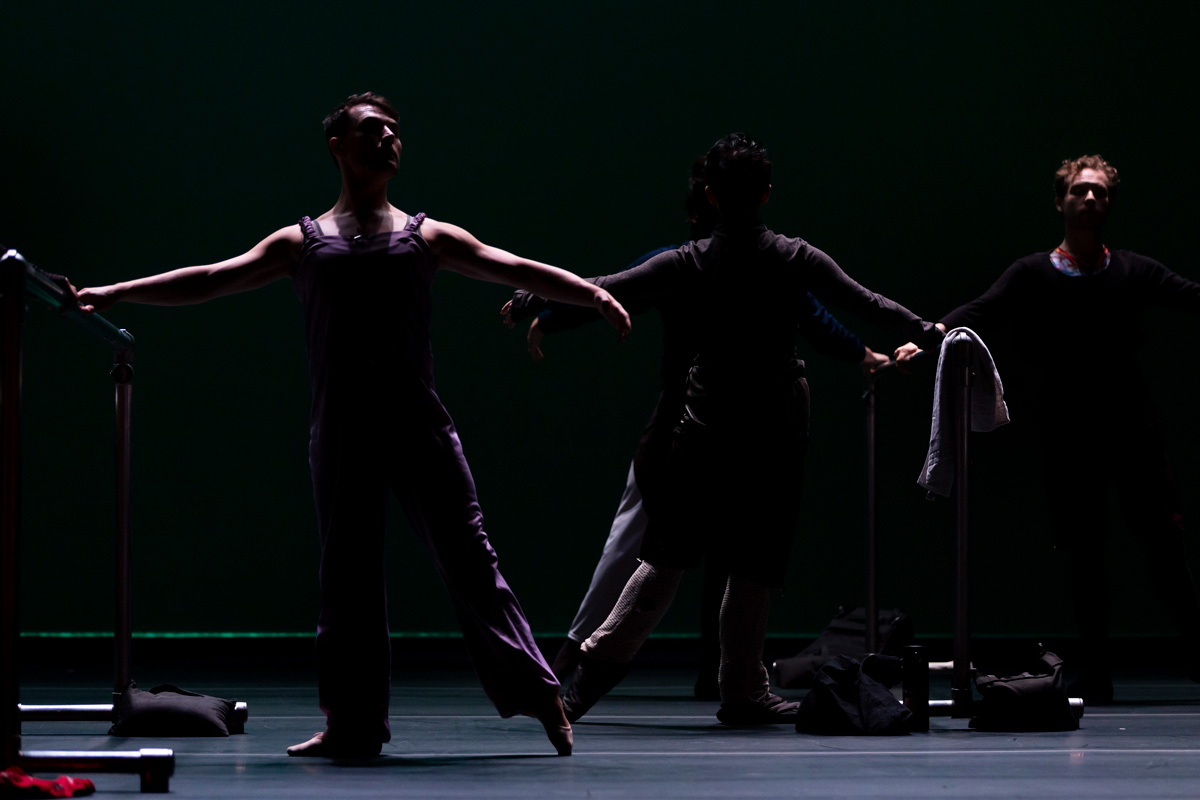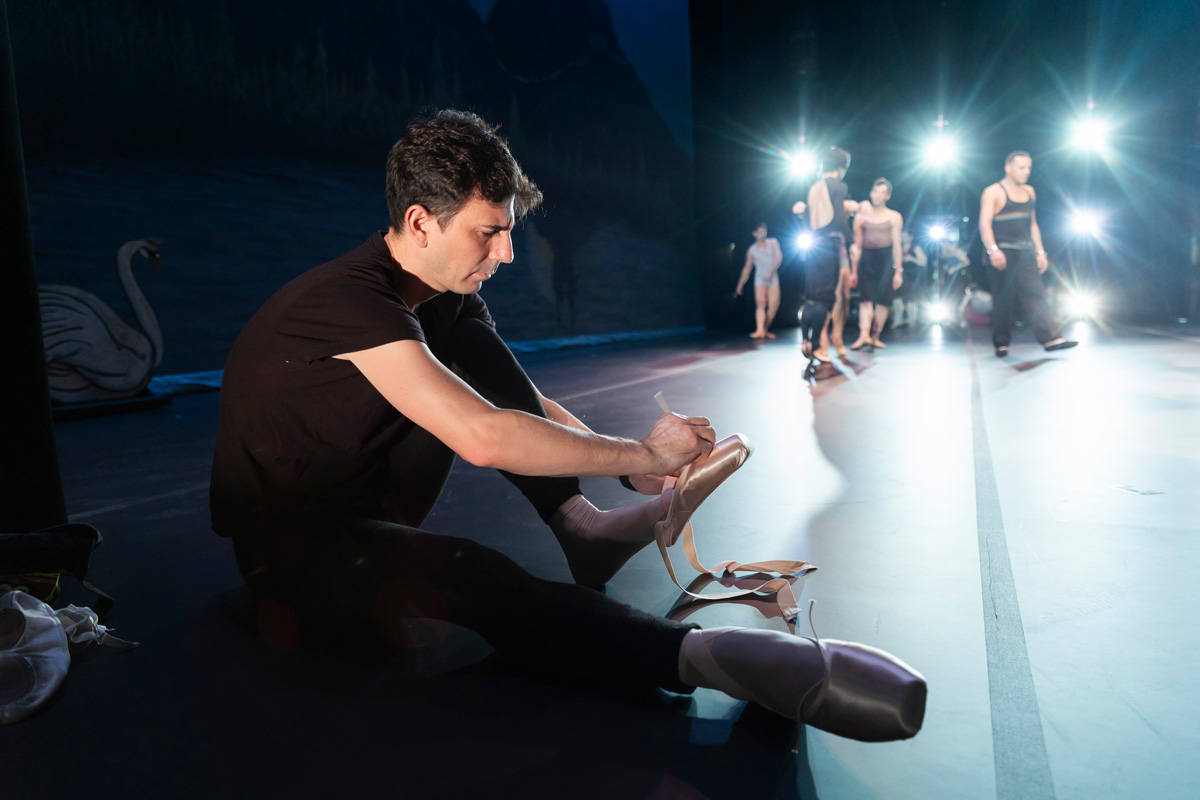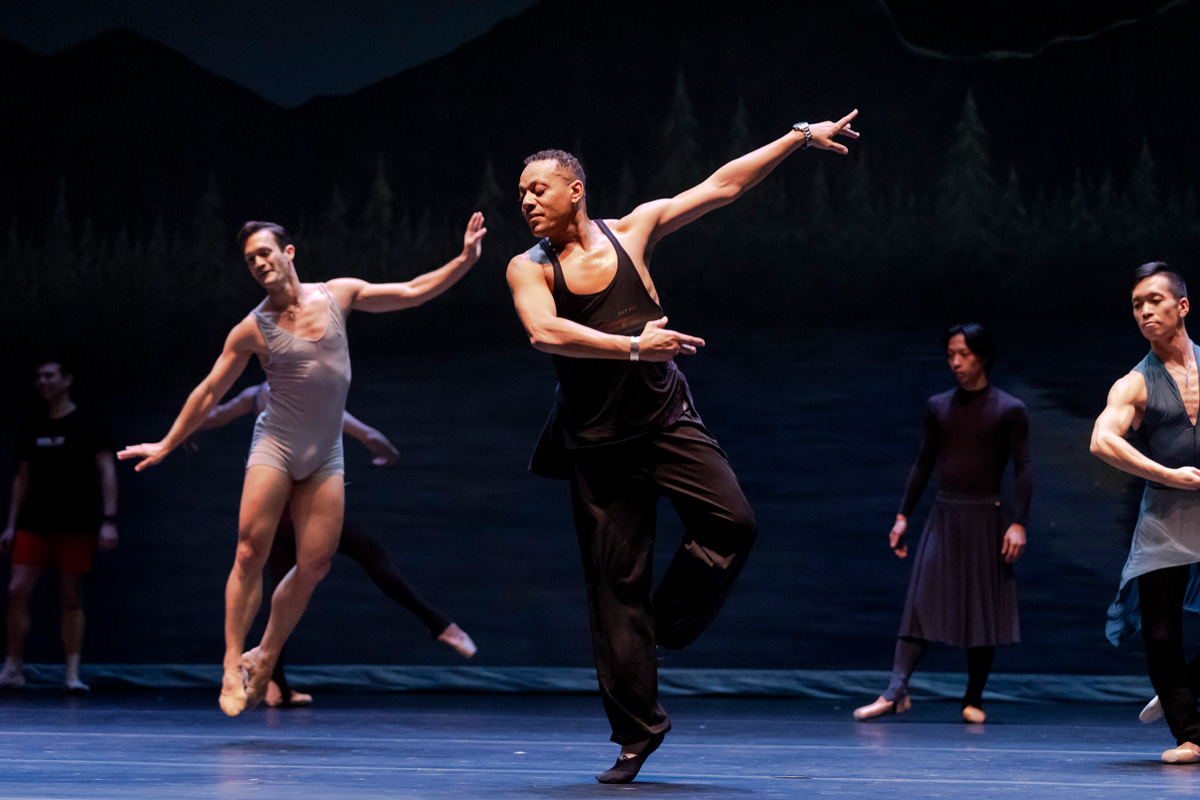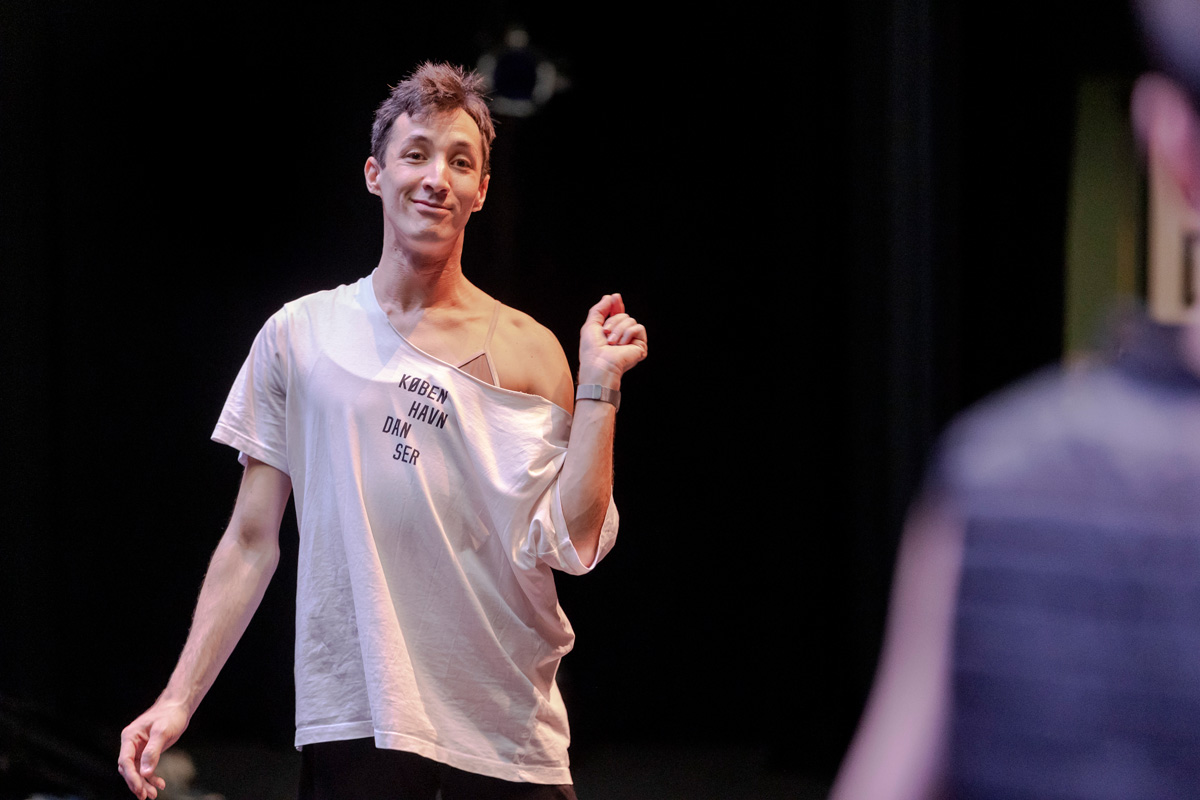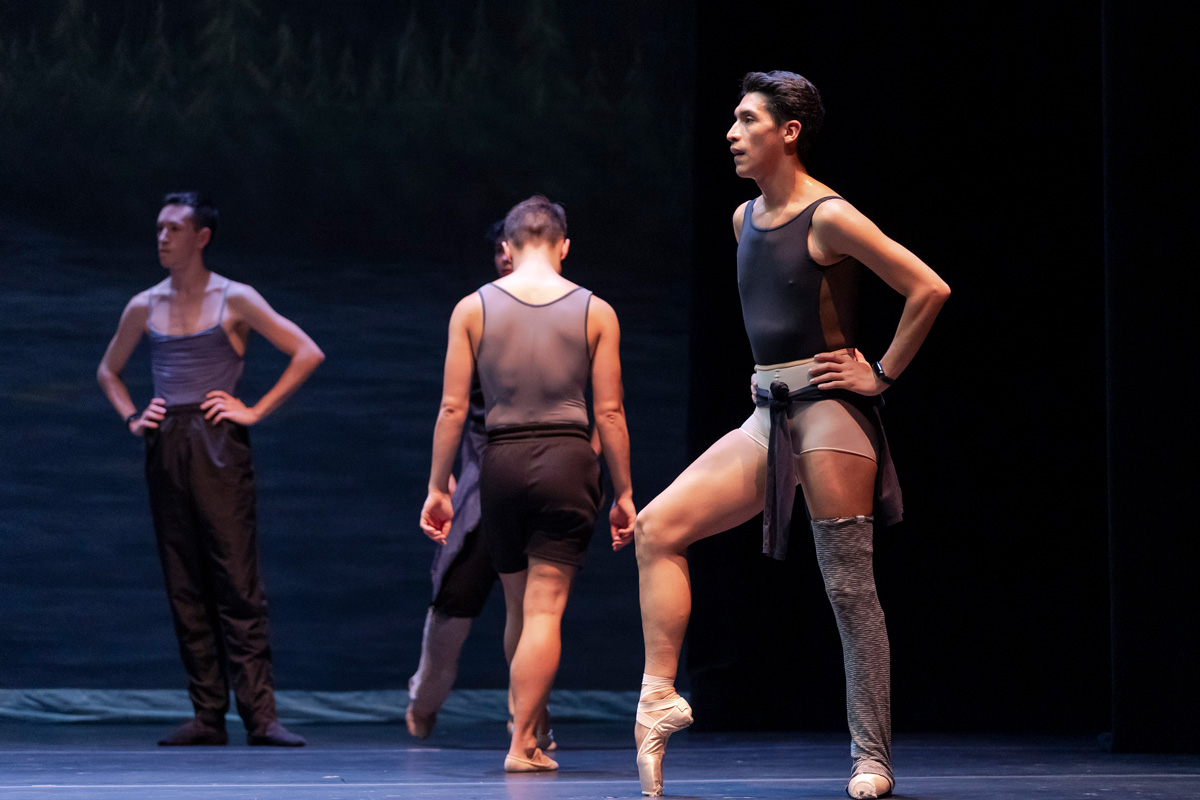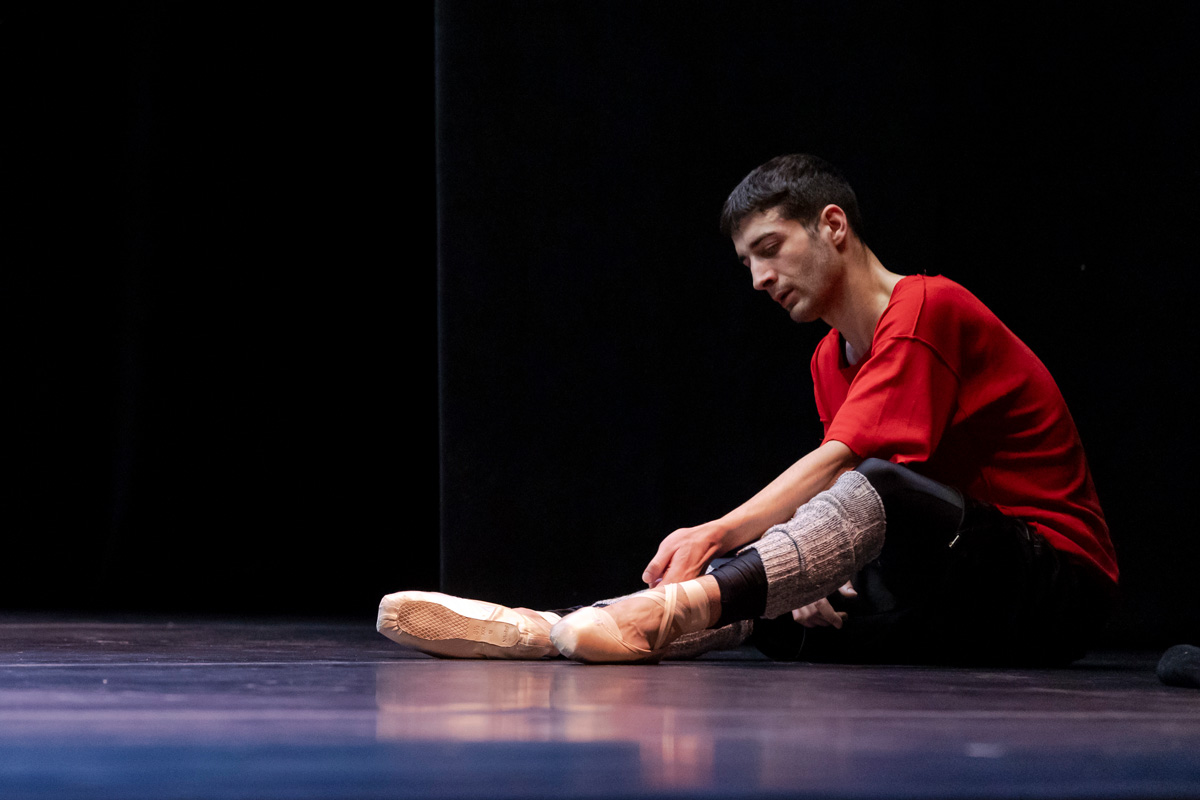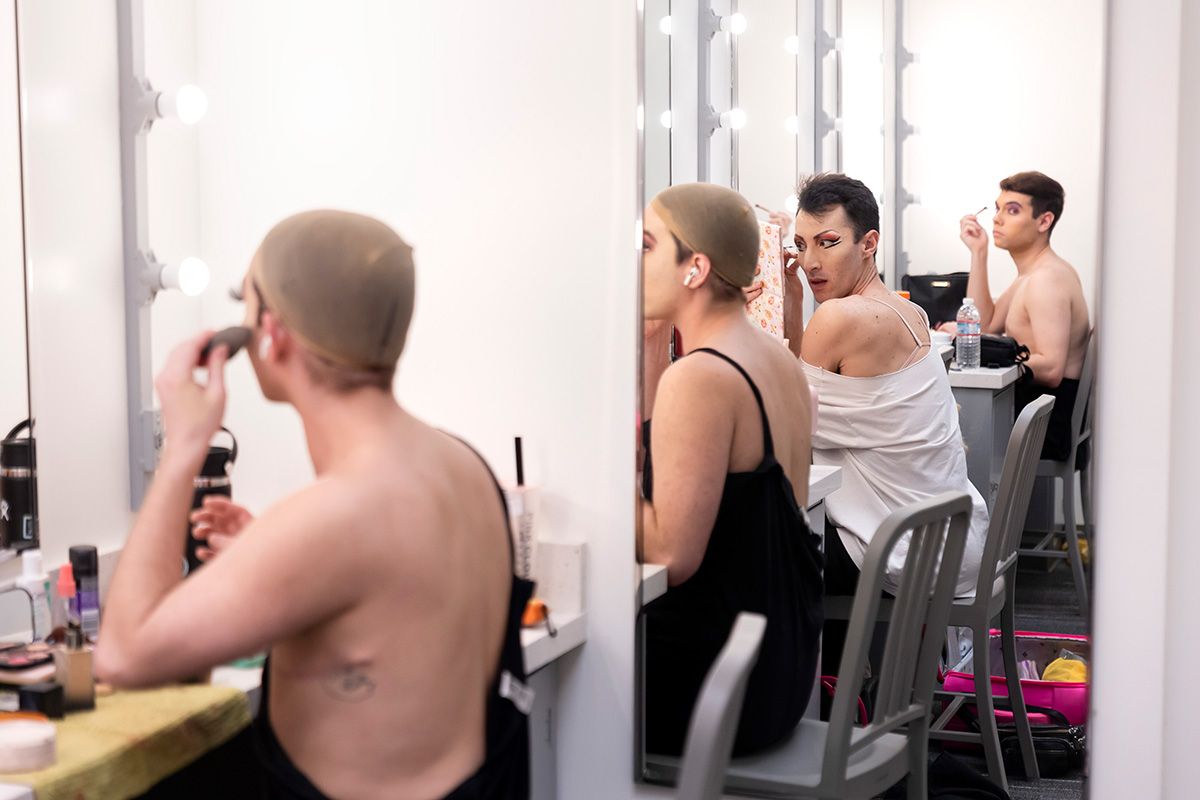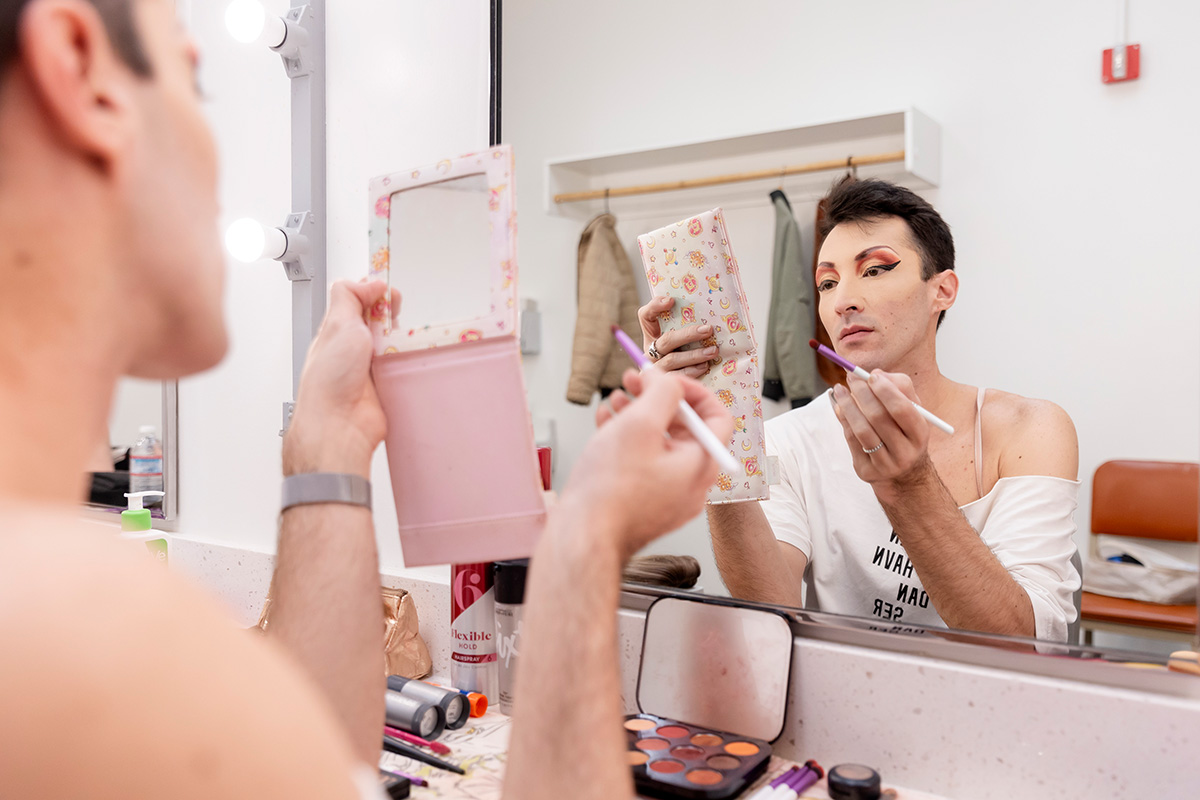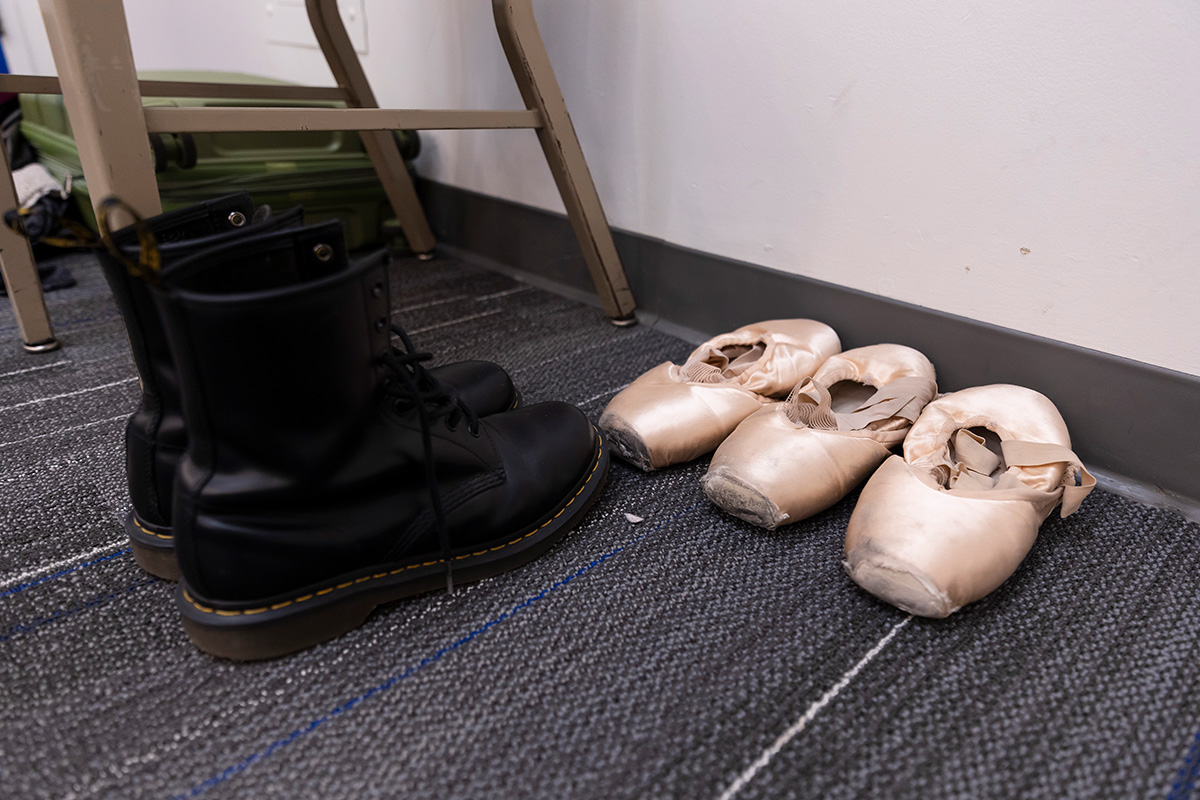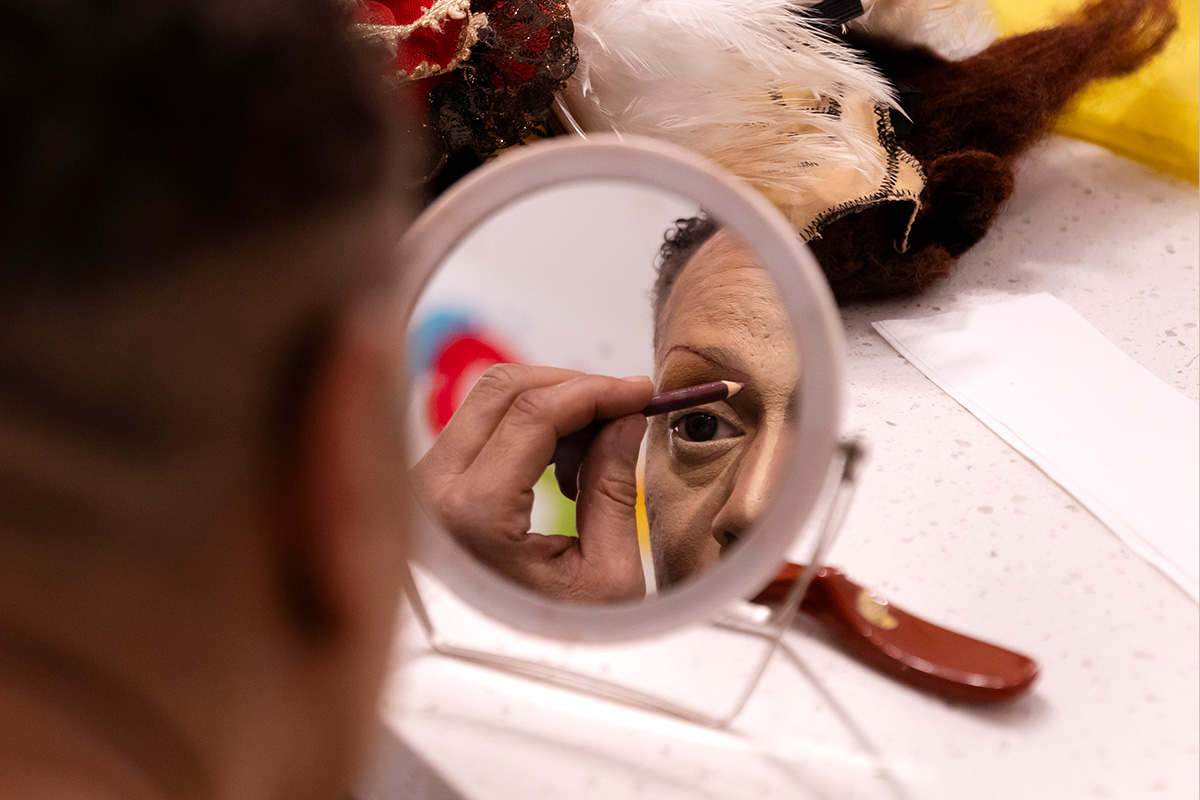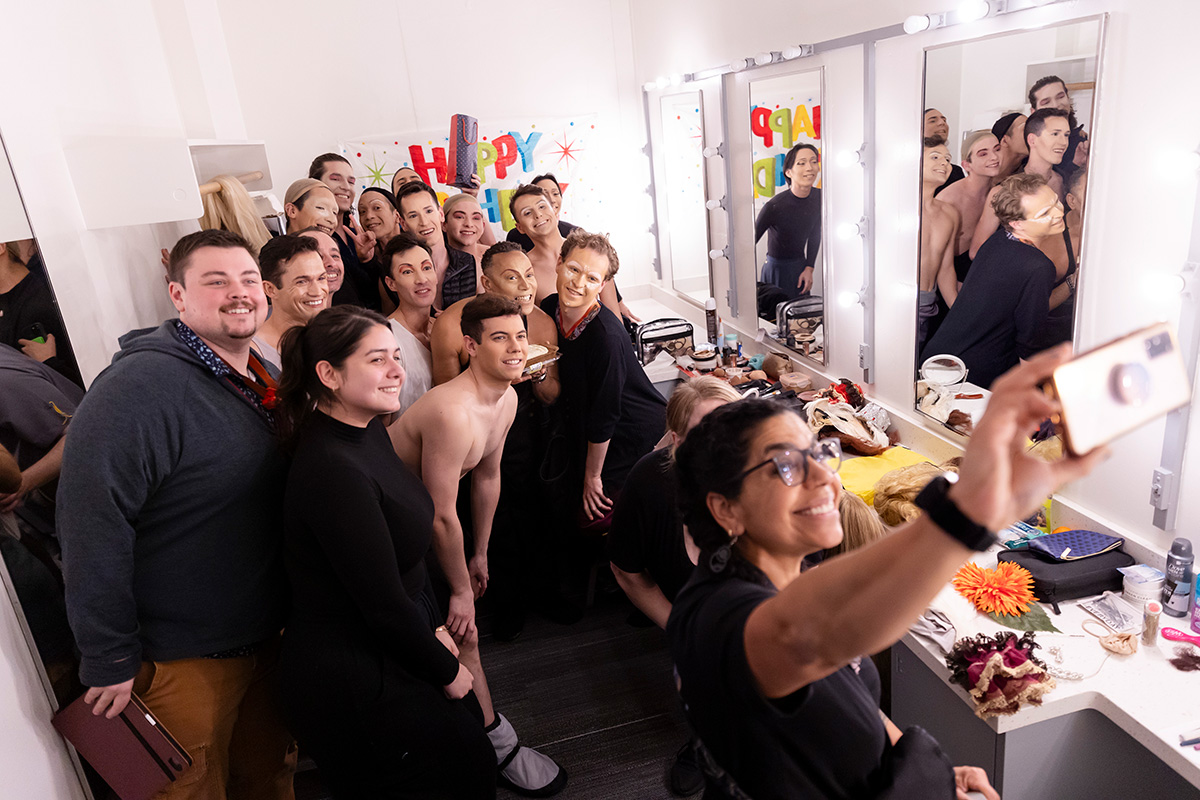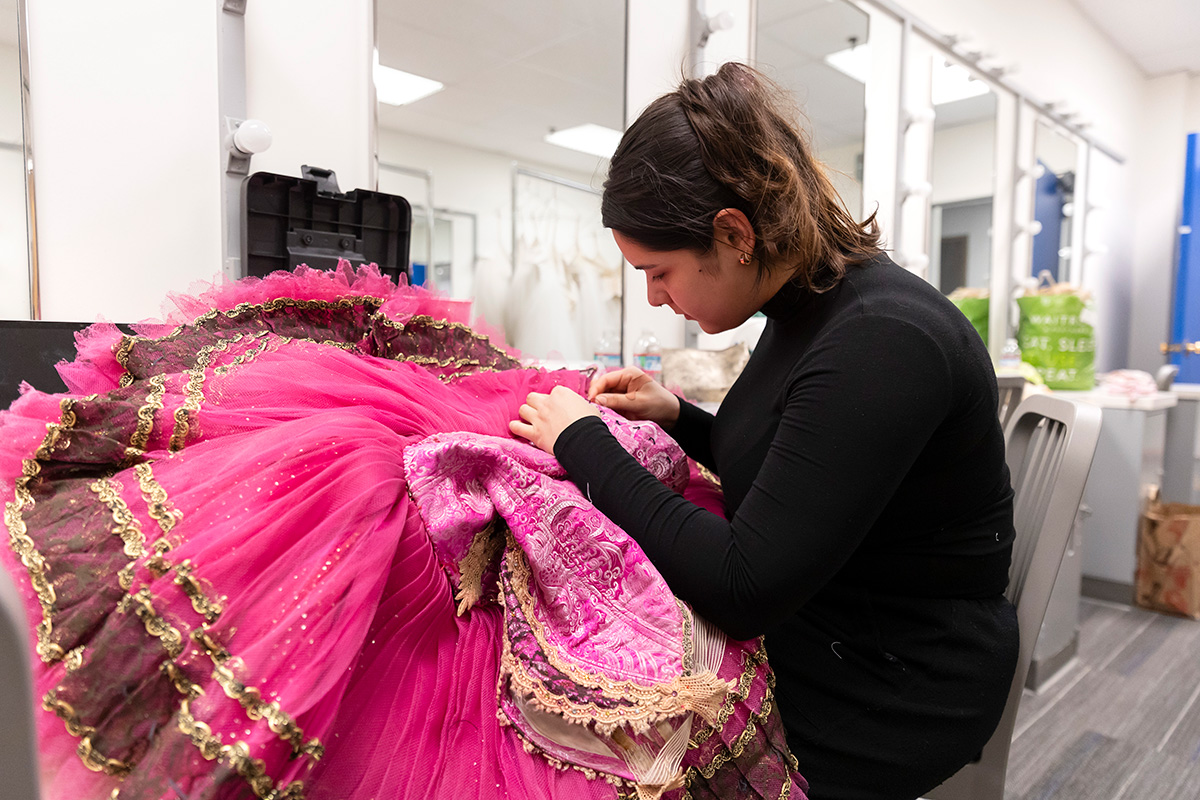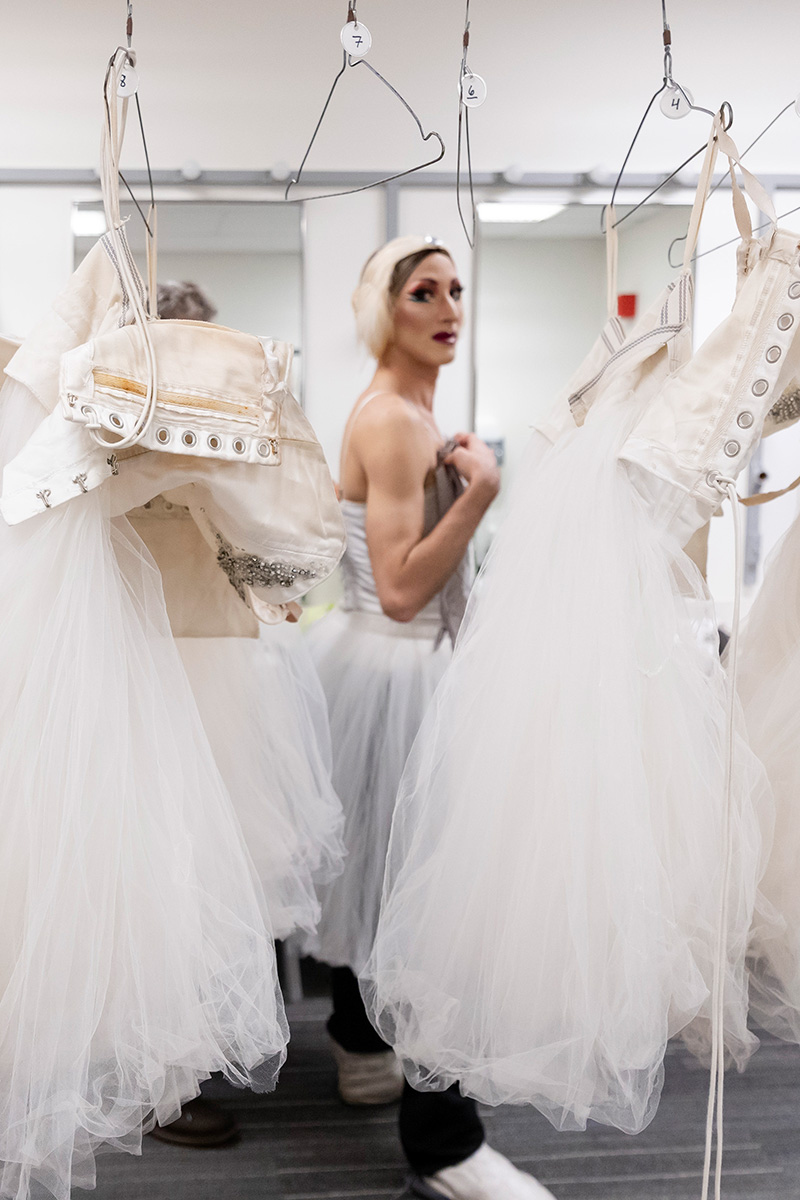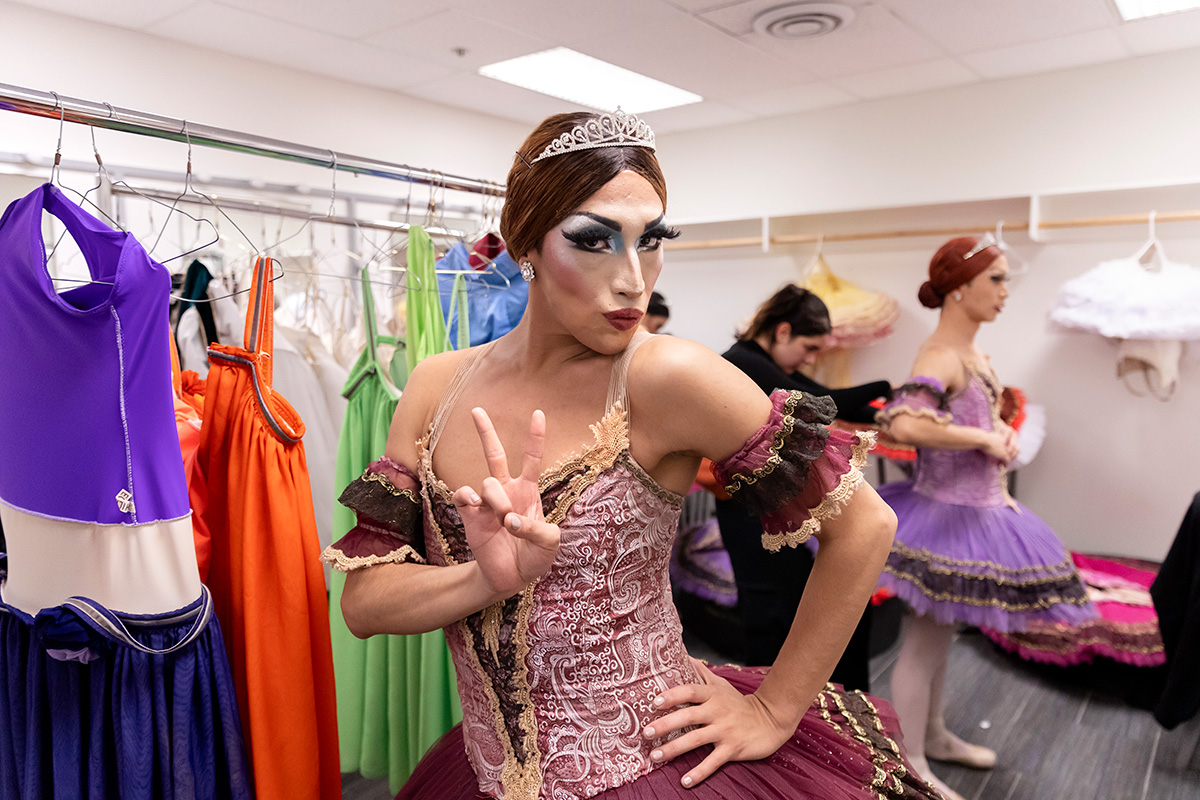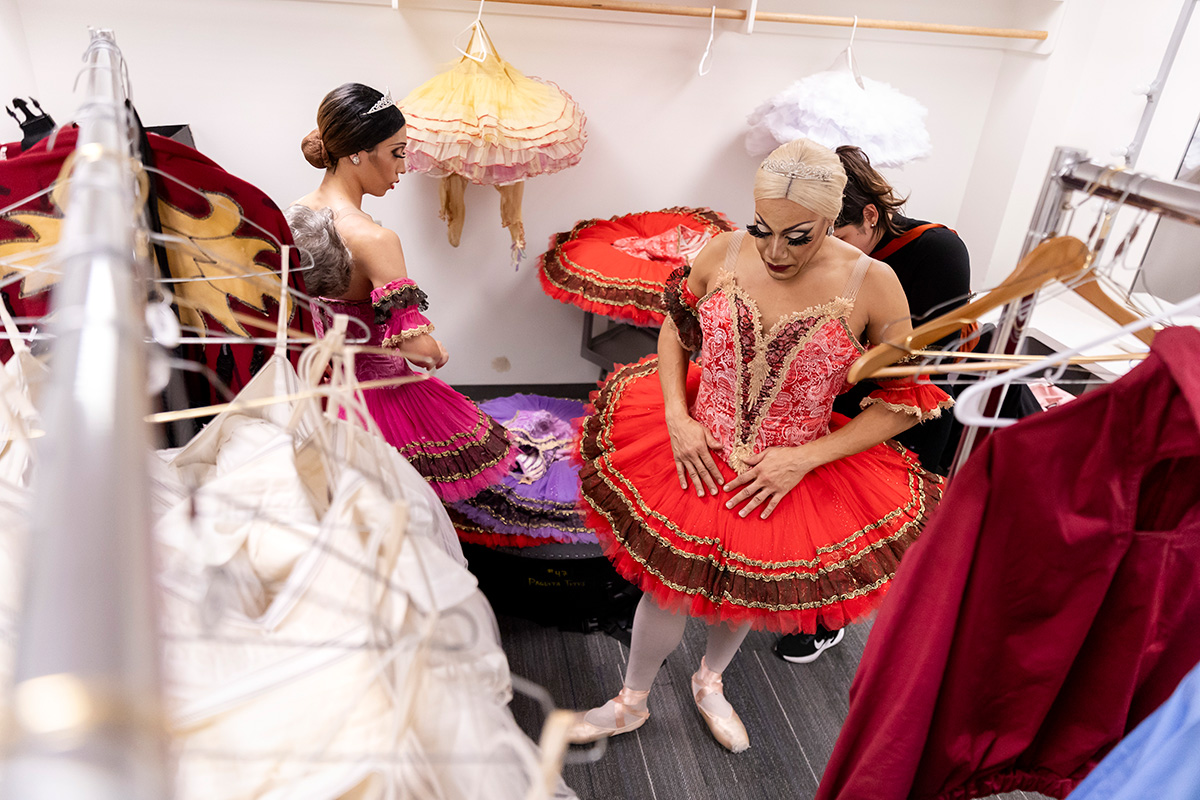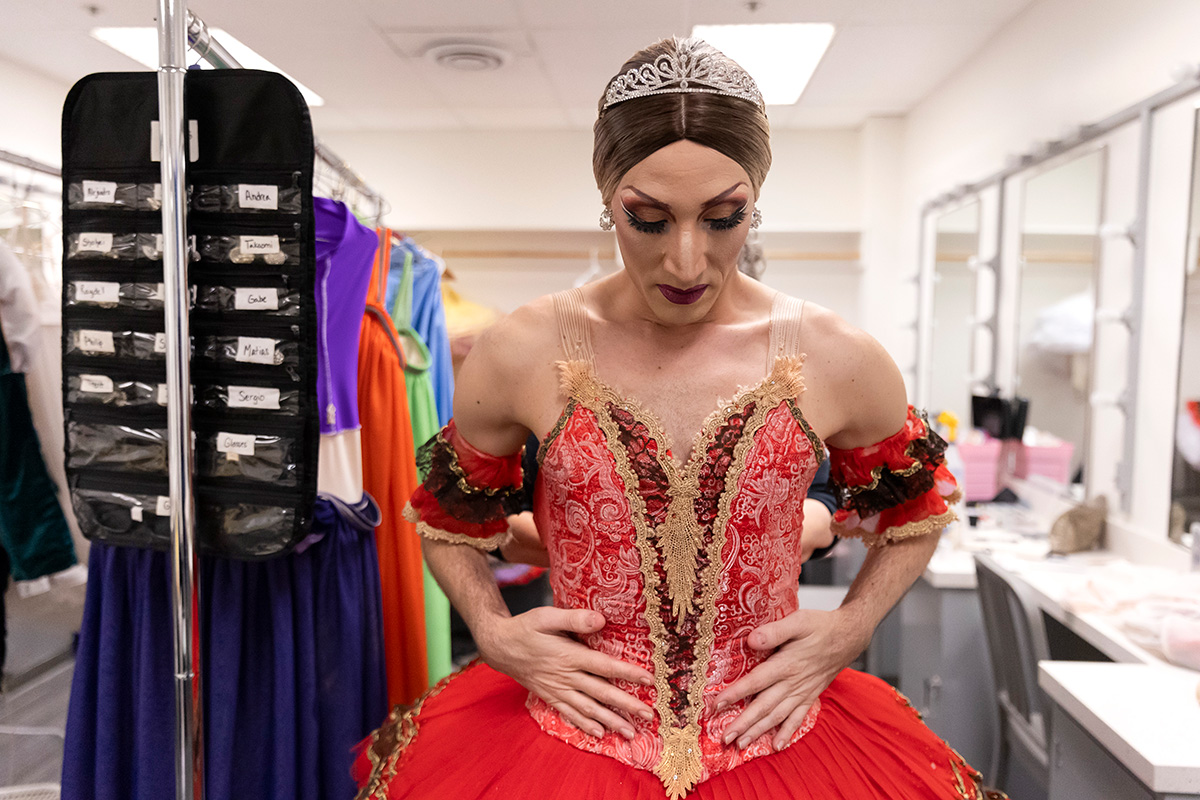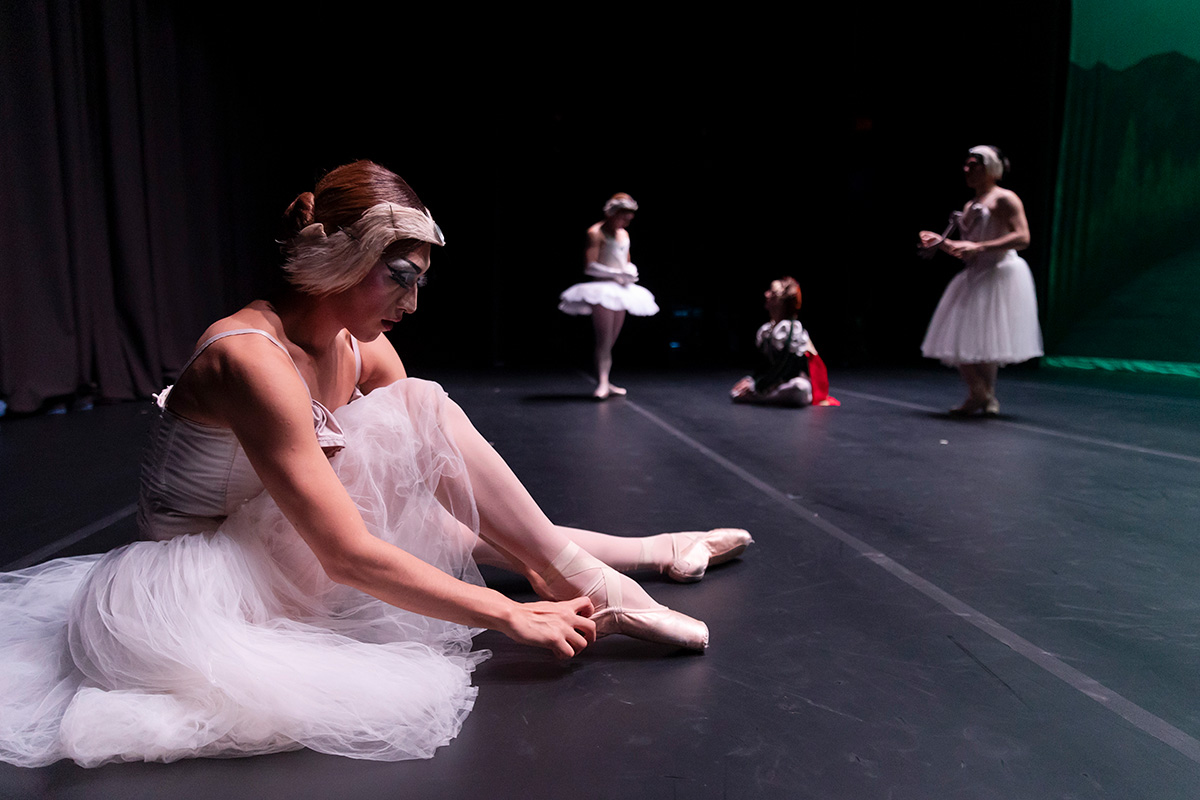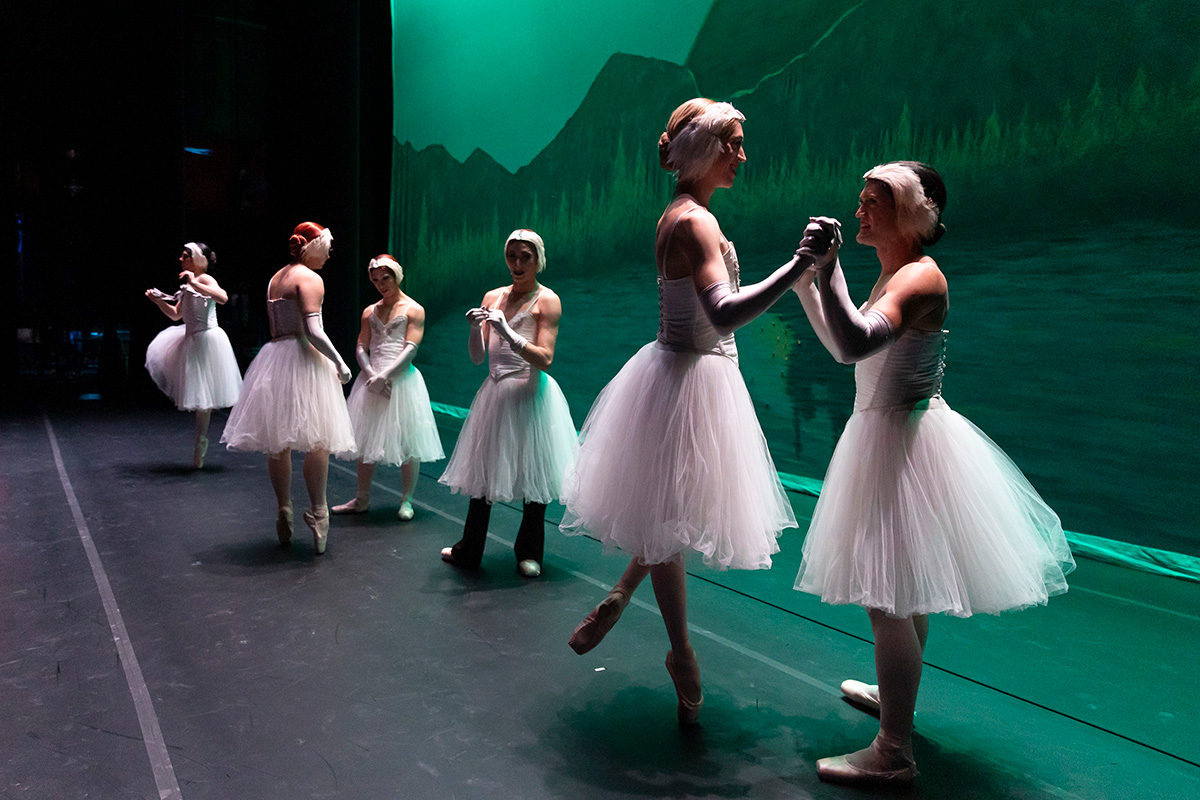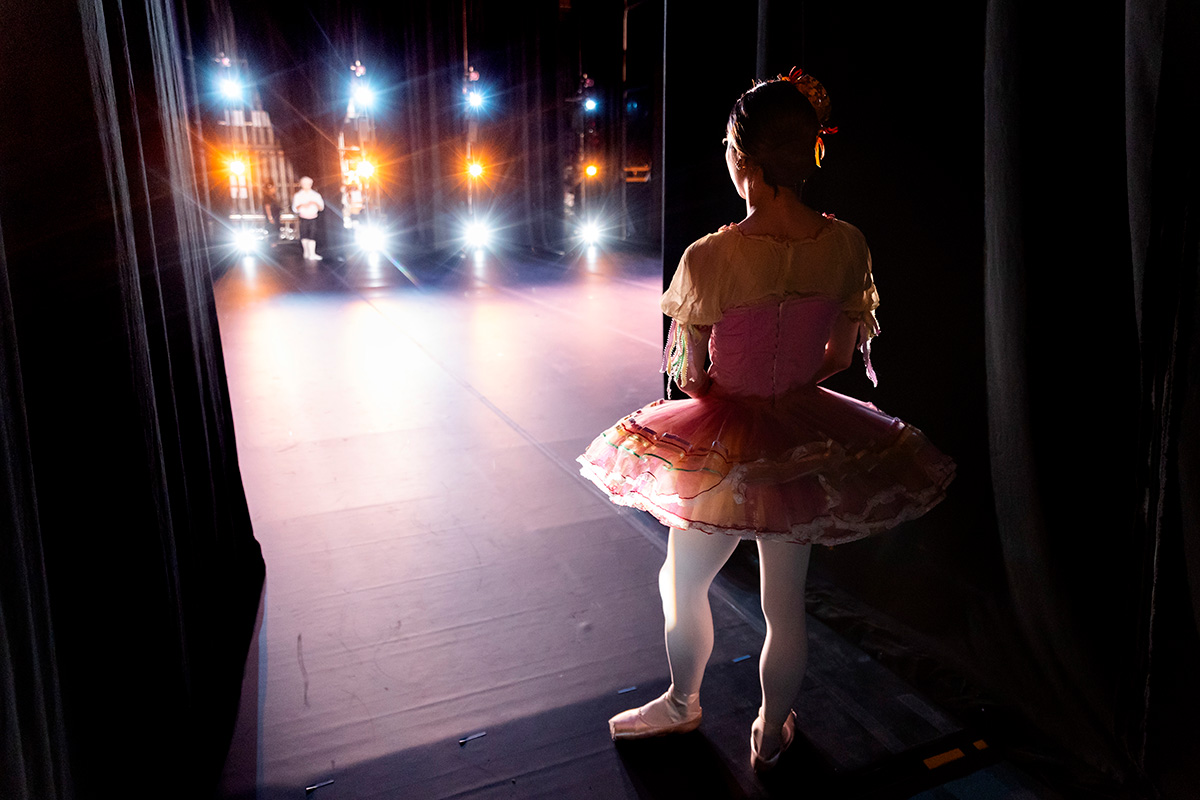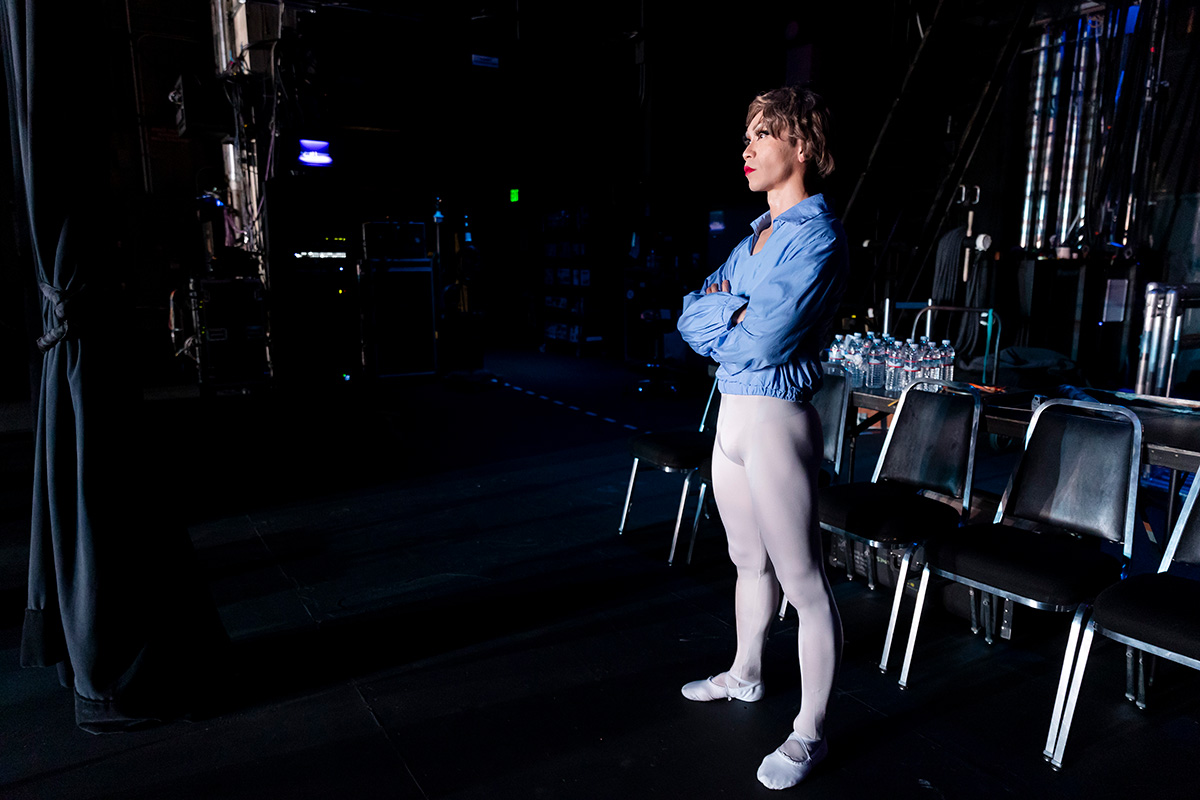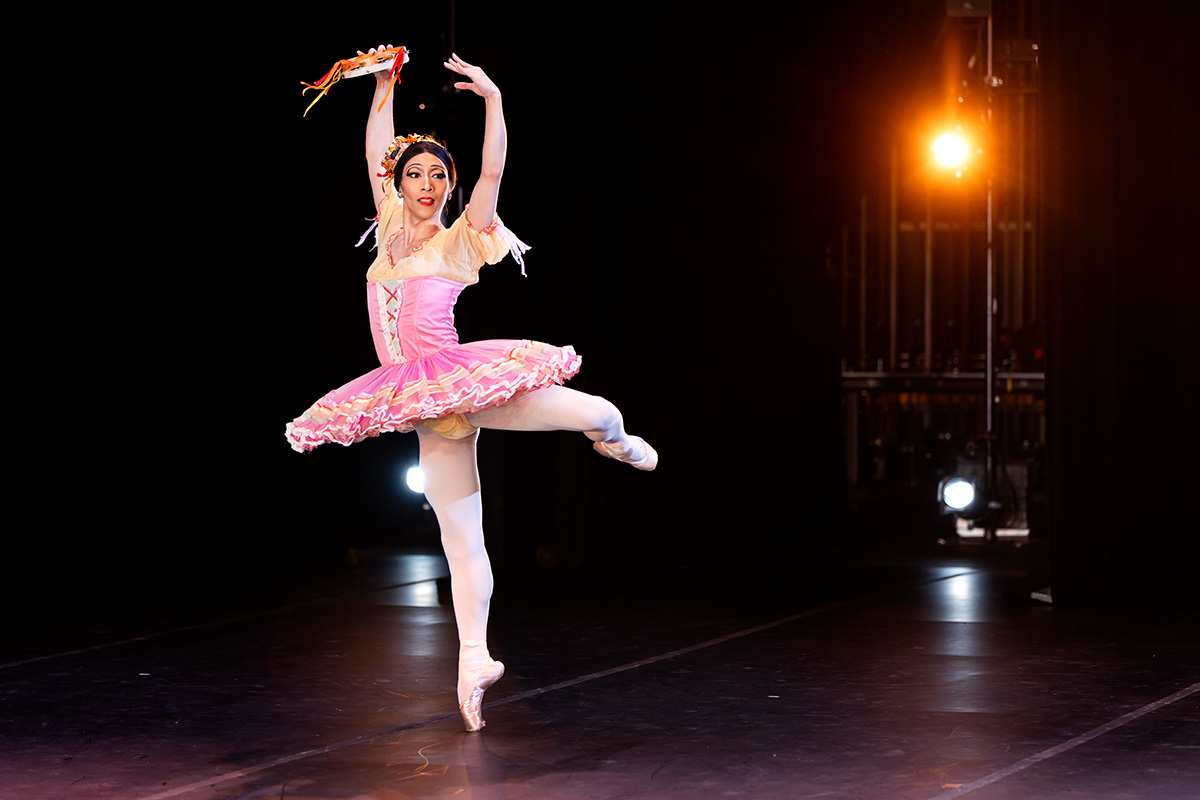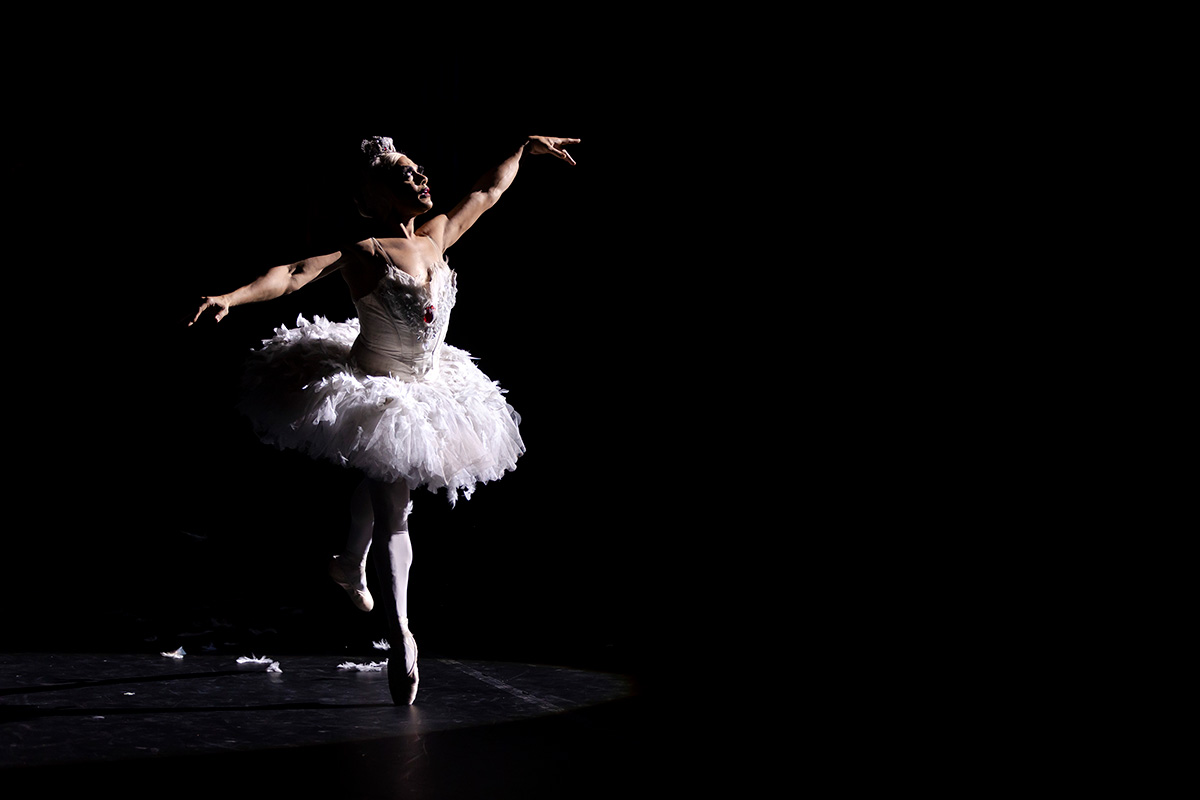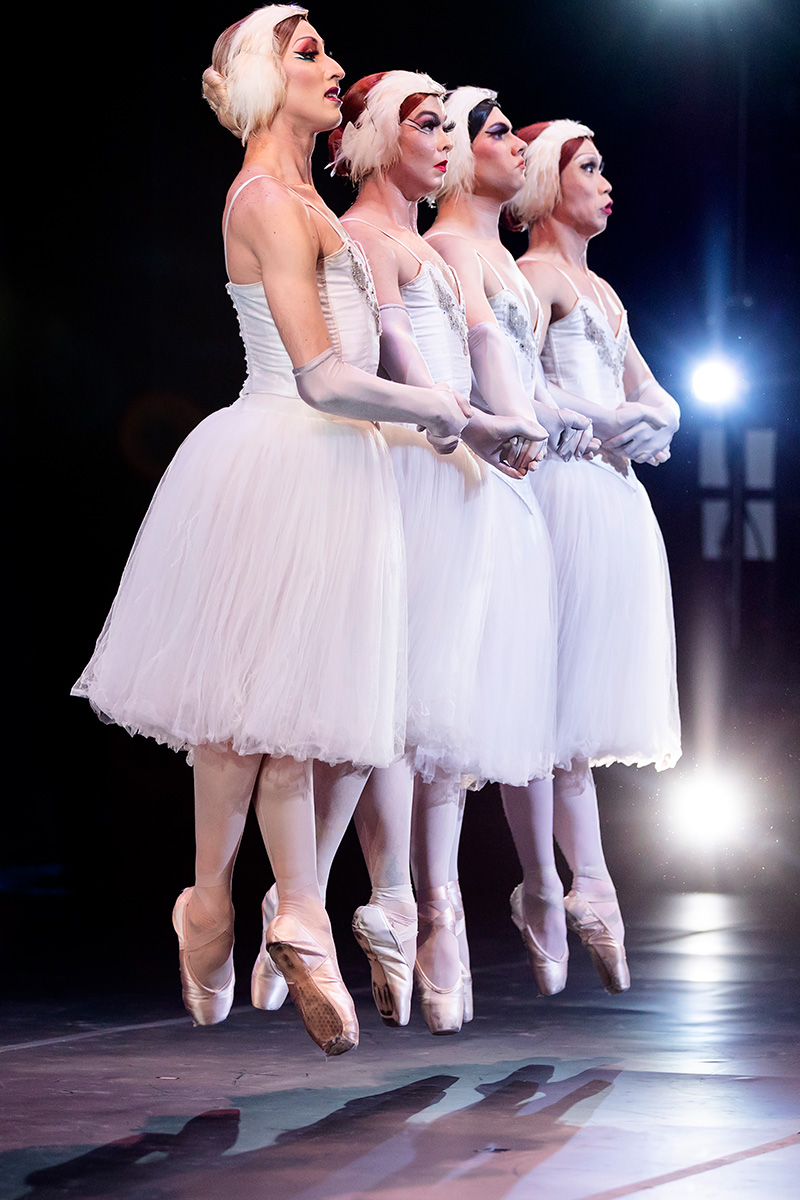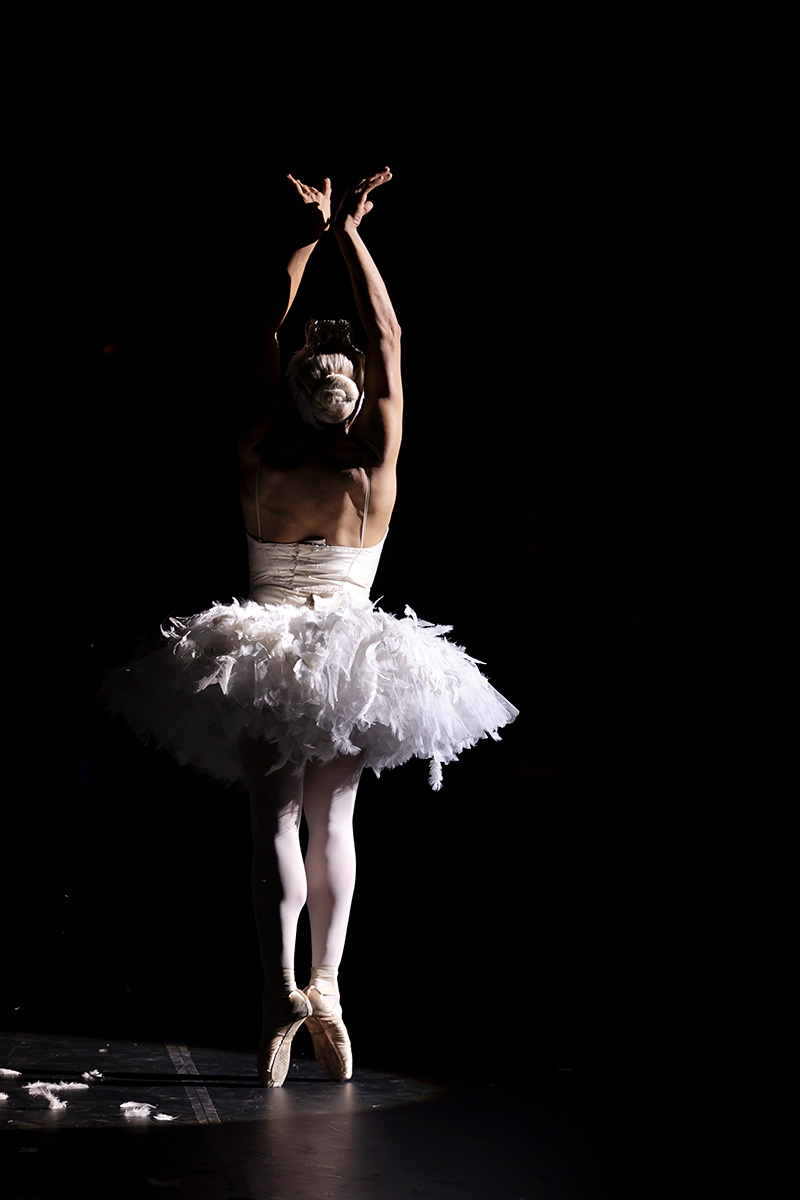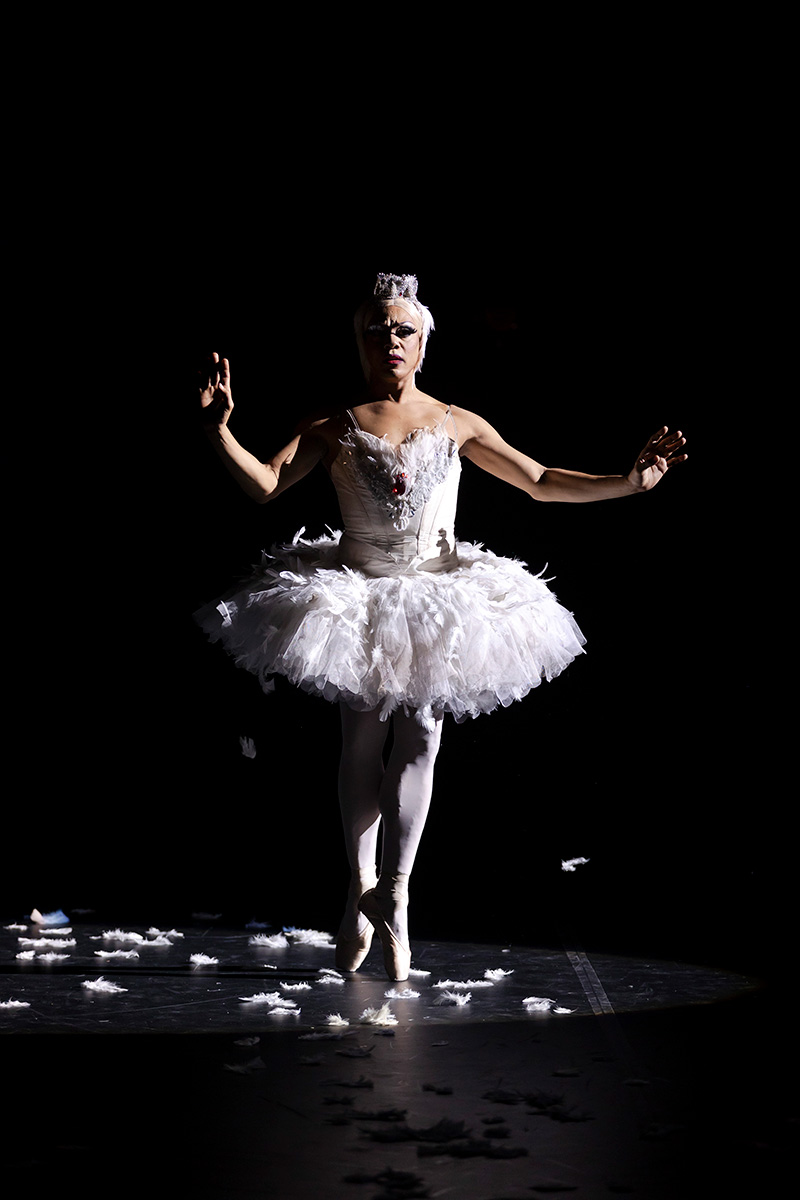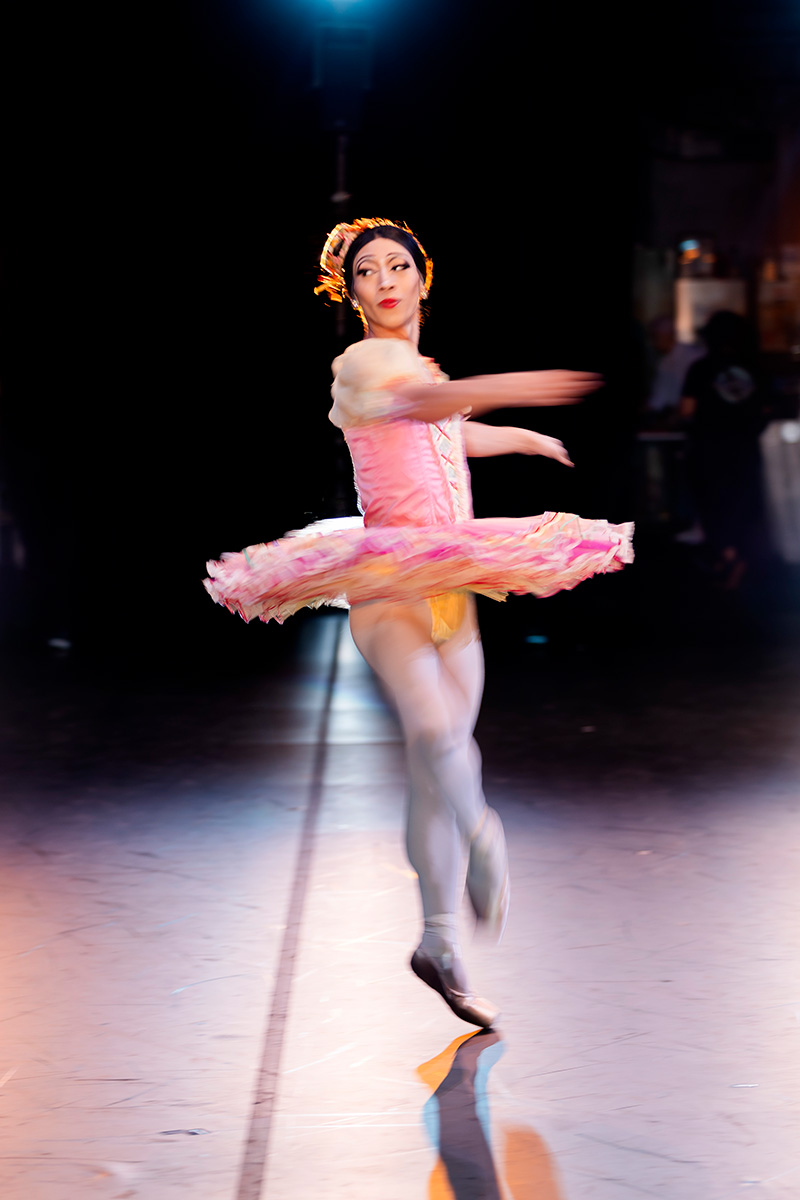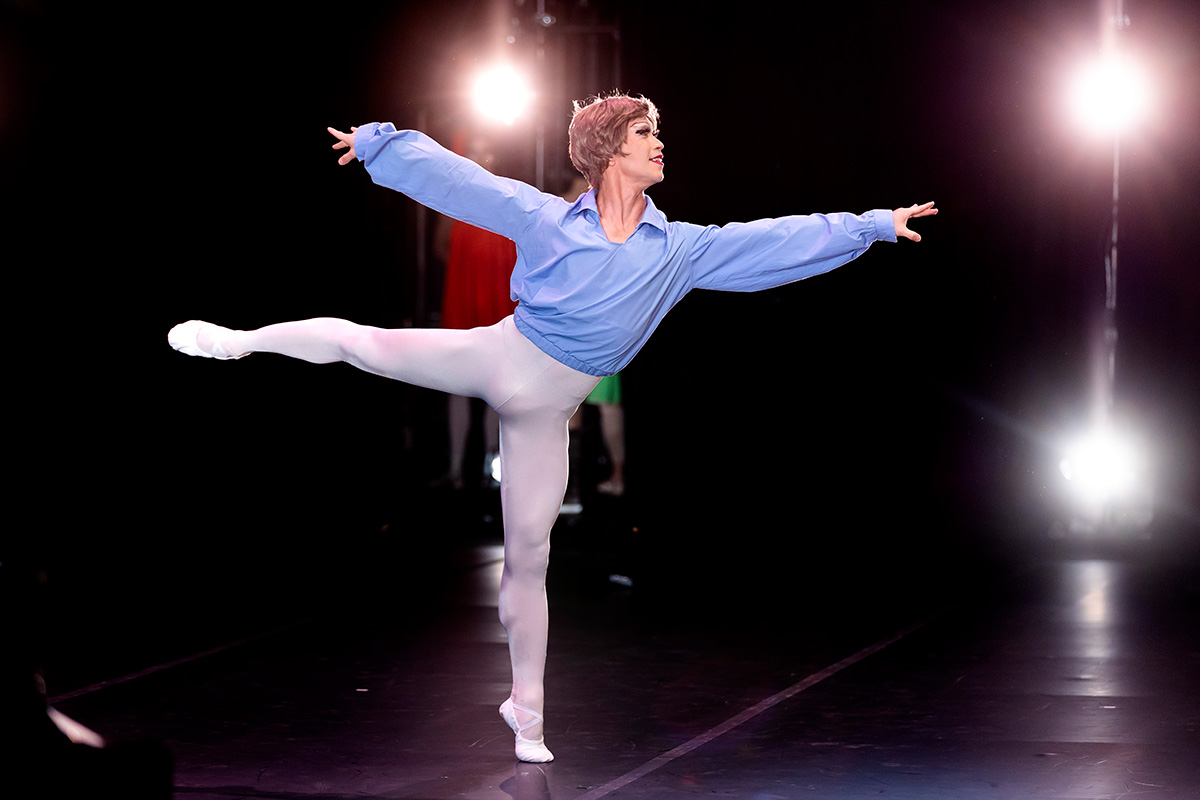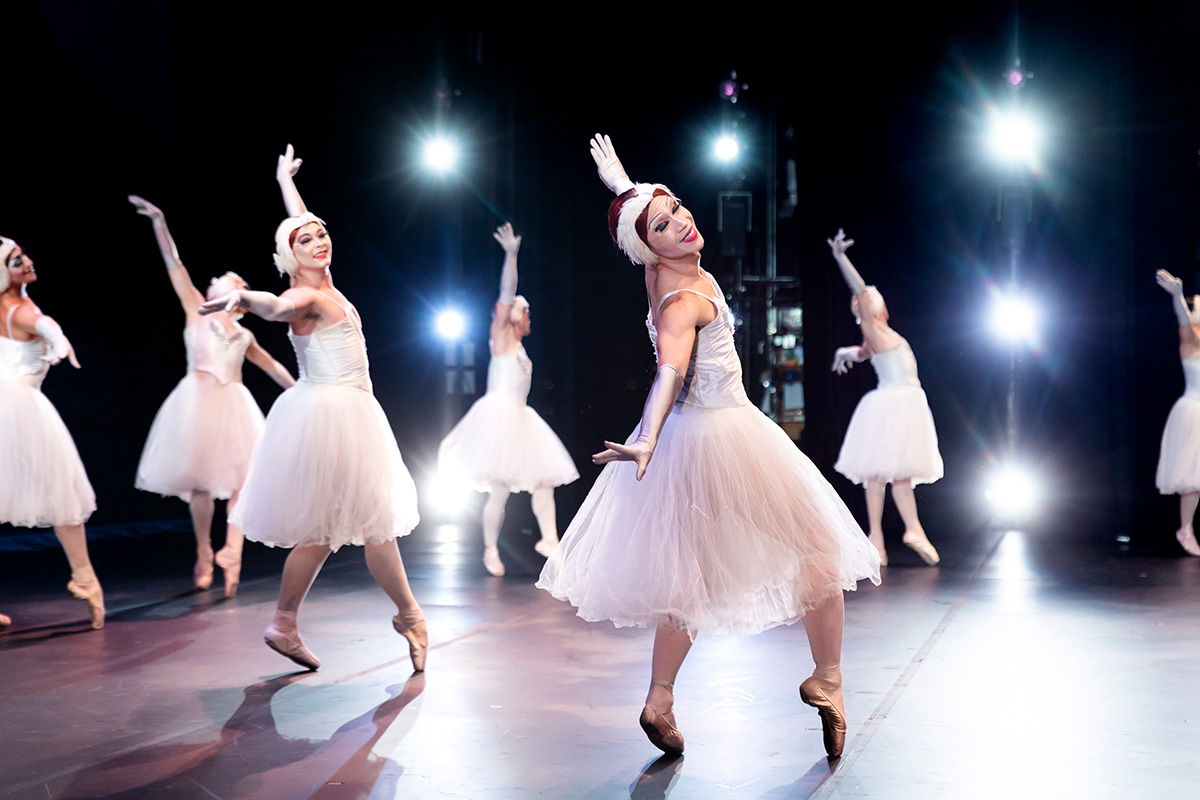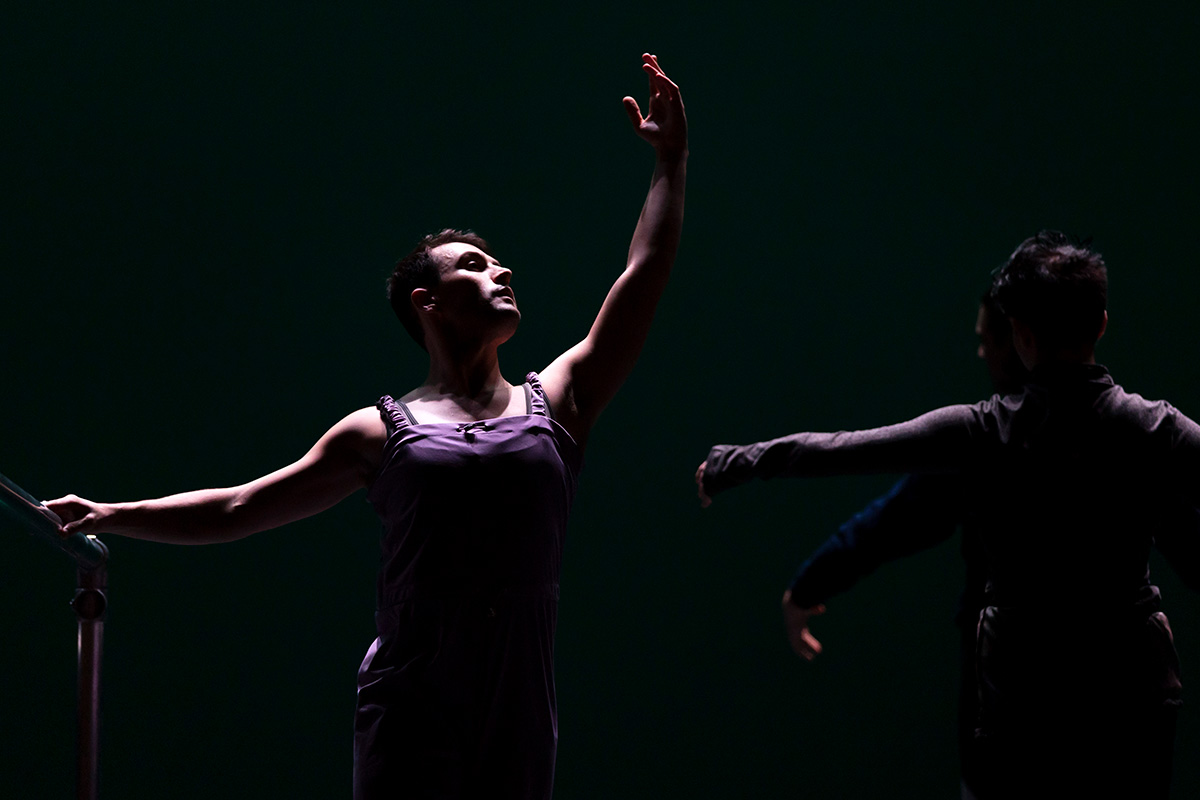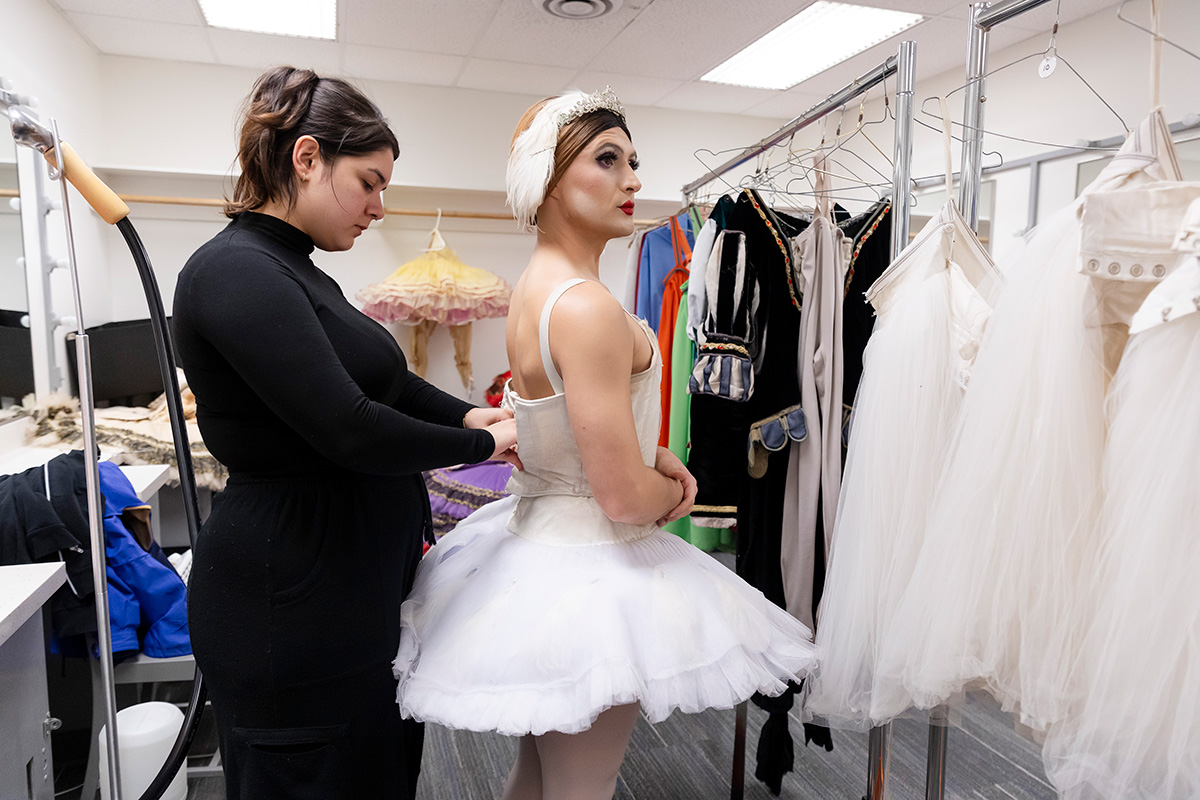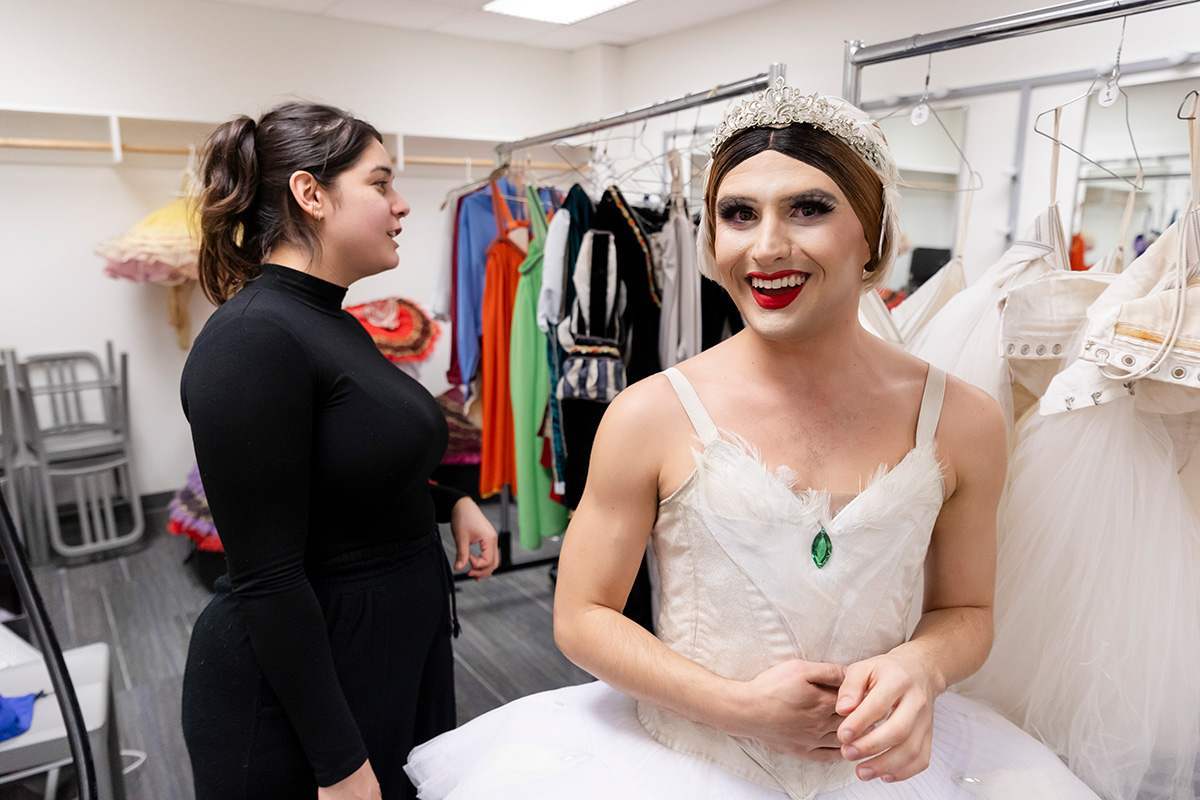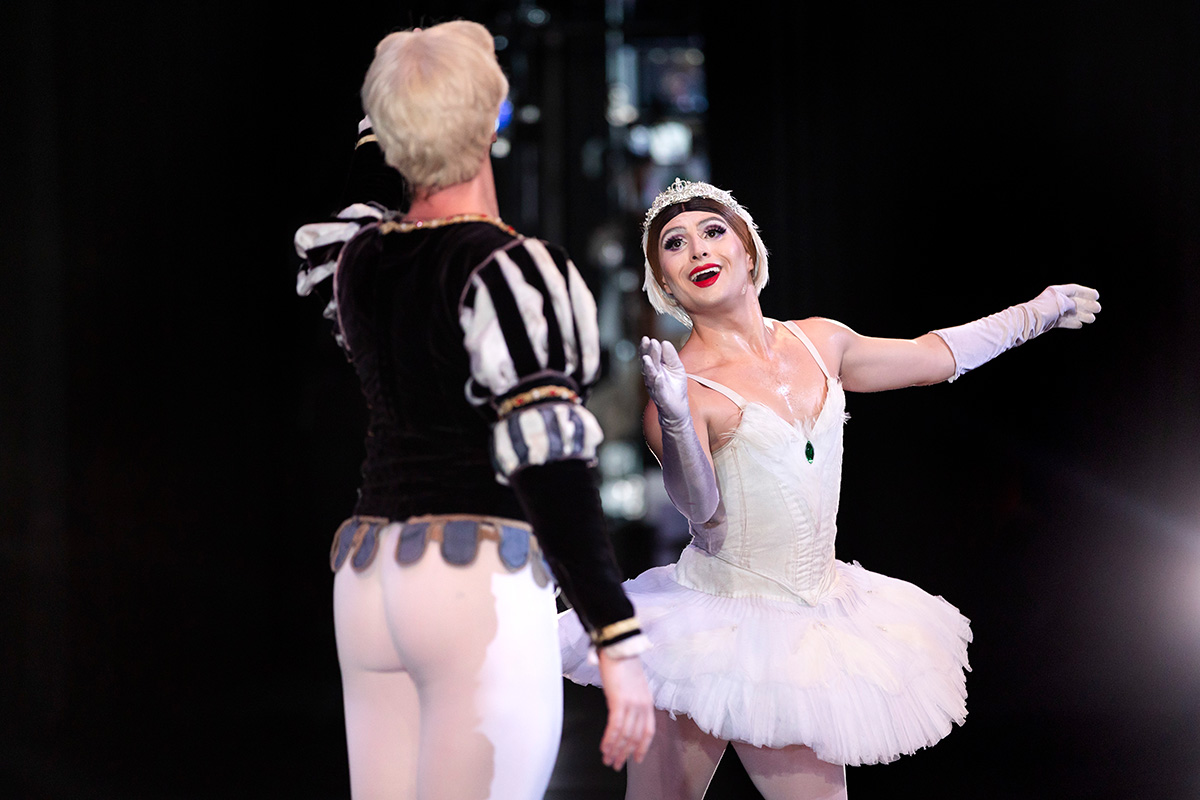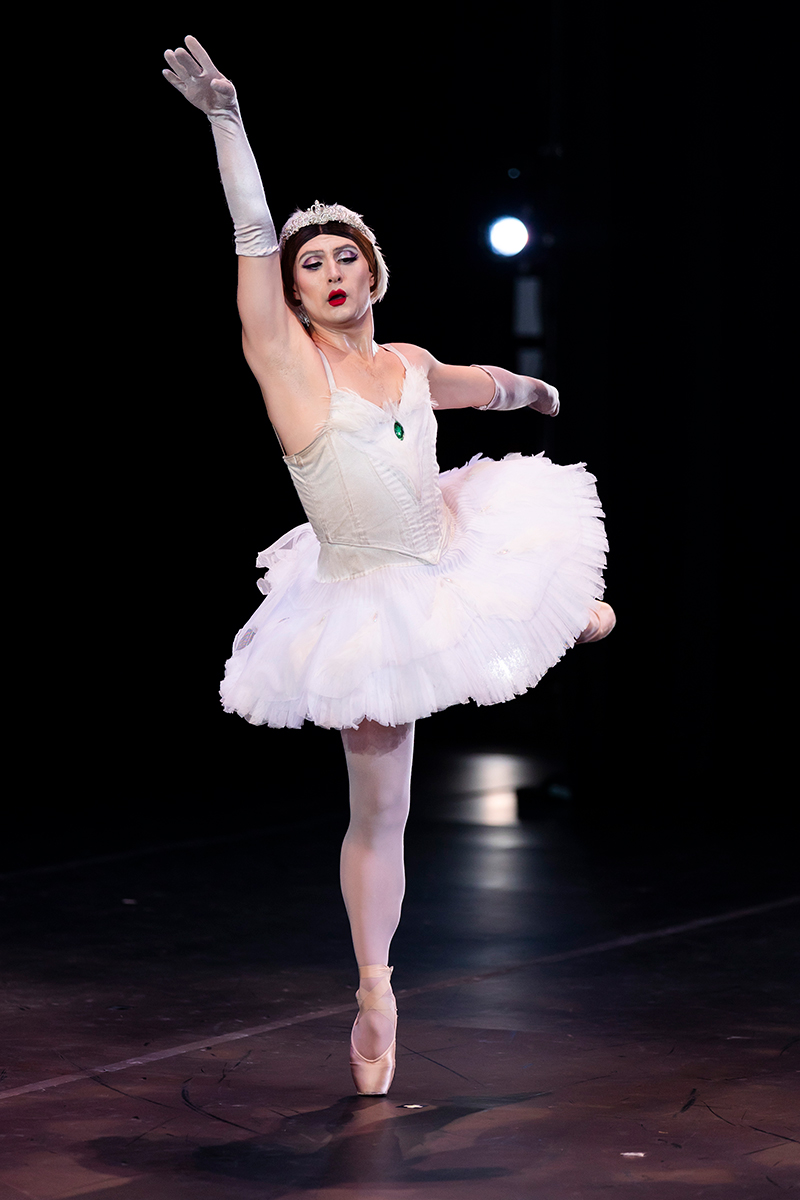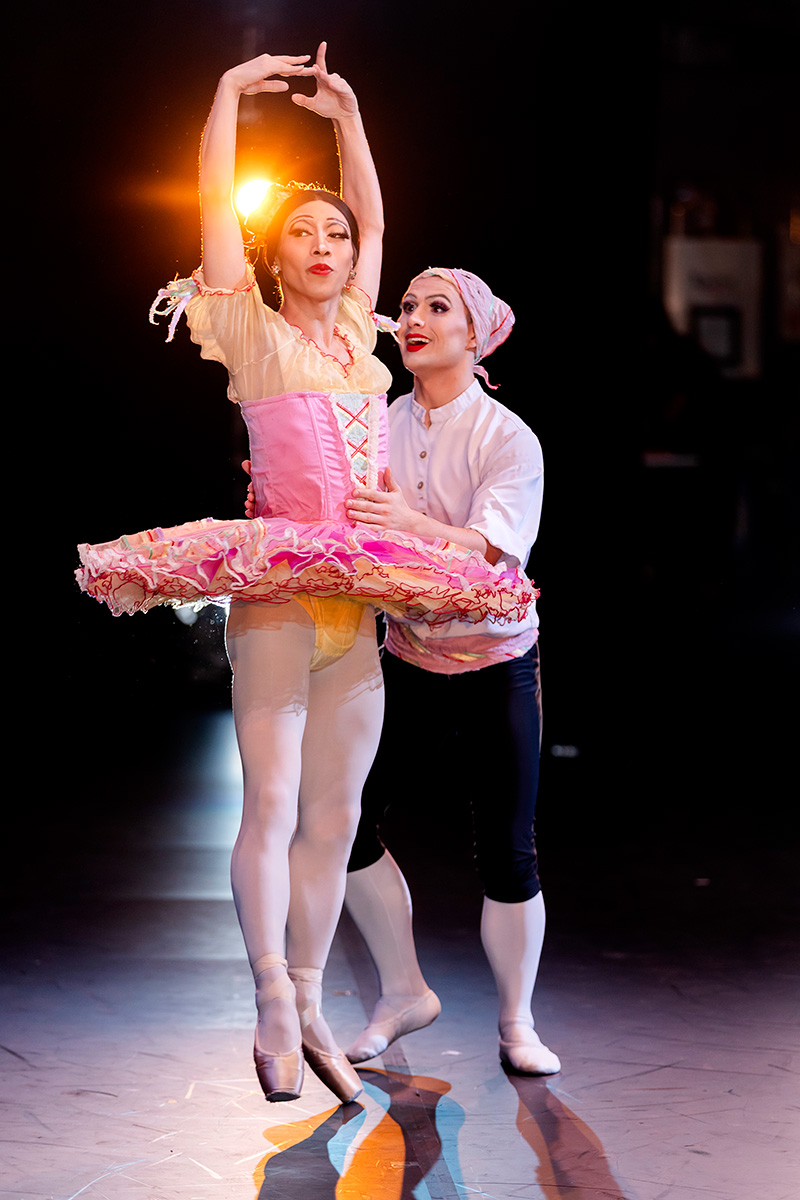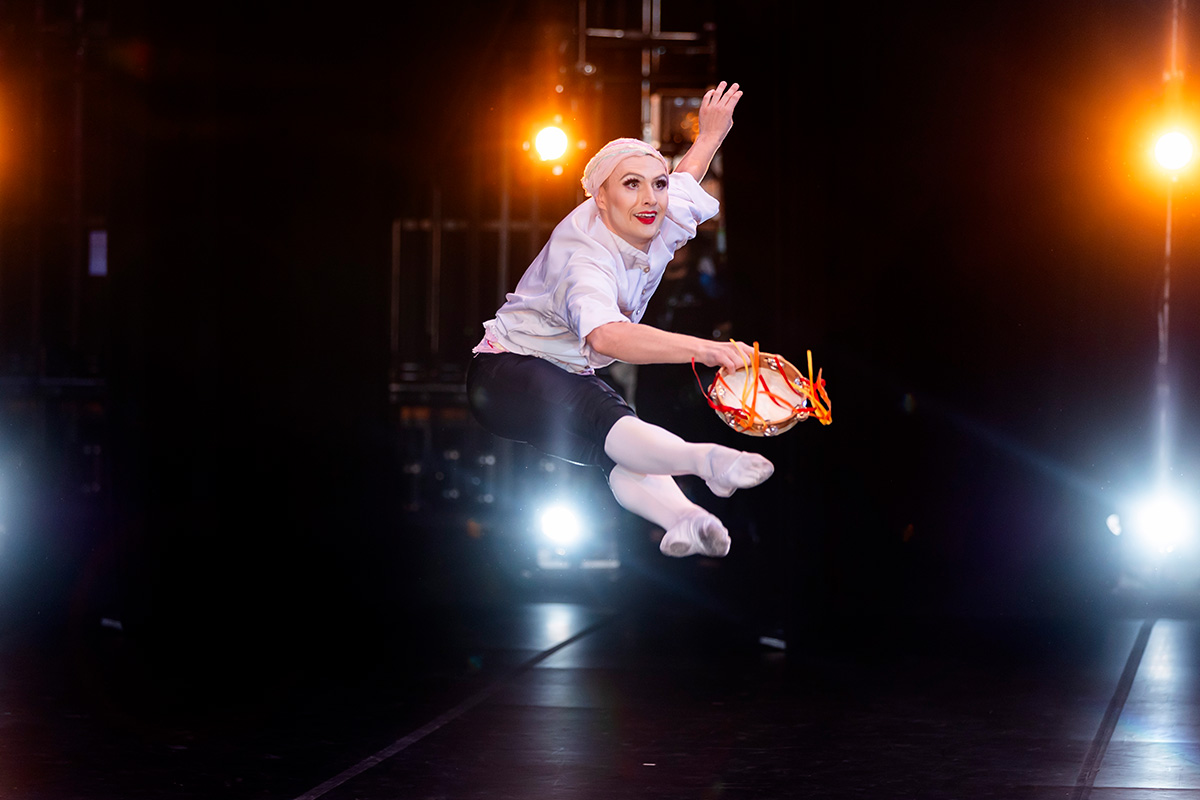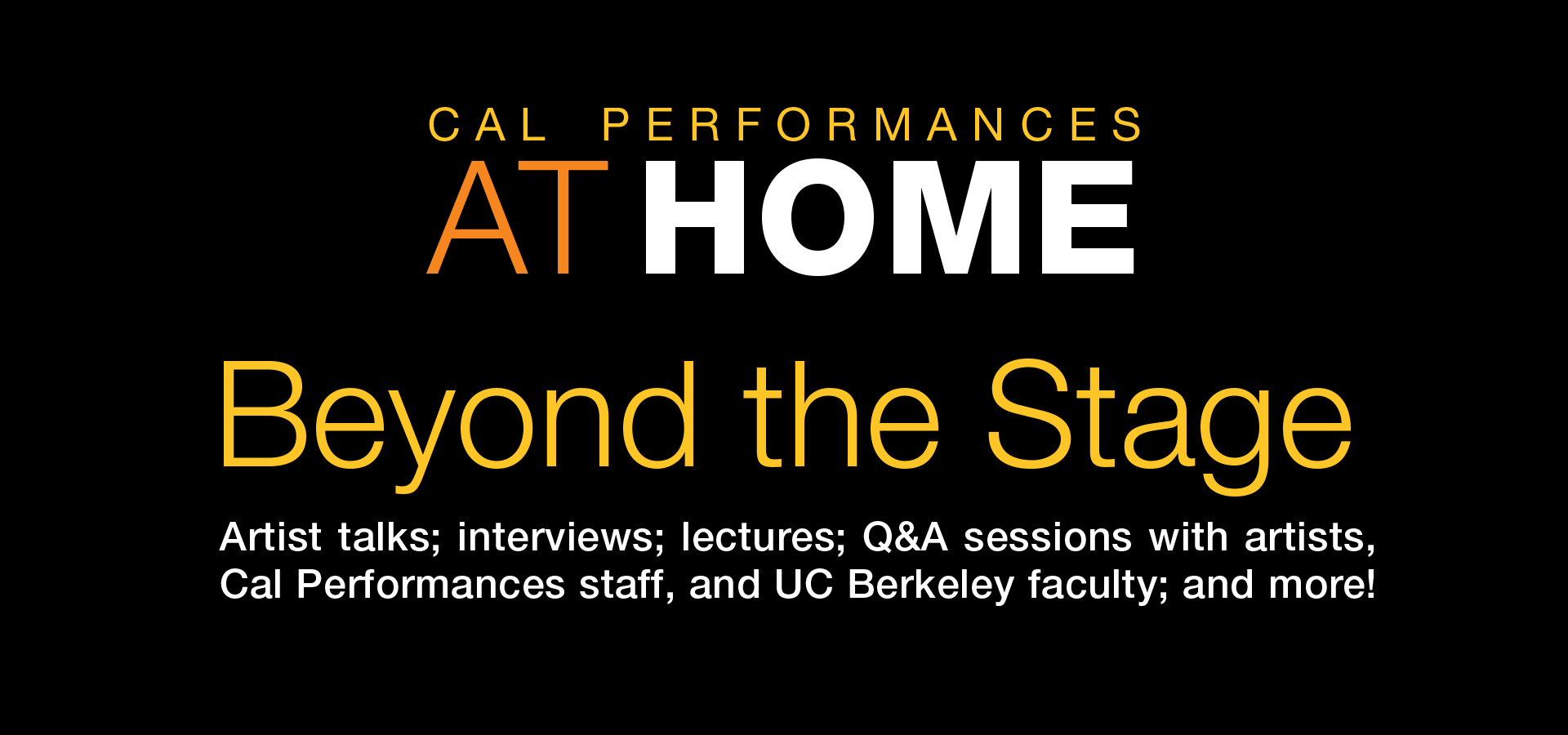
Cal Performances at Home is much more than a series of great streamed performances. Fascinating behind-the-scenes artist interviews. Informative and entertaining public forums. The Cal Performances Reading Room, featuring books with interesting connections to our Fall 2020 programs. For all this and much more, keep checking this page for frequent updates and to journey far, far Beyond the Stage!
Major support for Beyond the Stage is provided by Bank of America.
Beyond the Stage
The Making of William Kentridge’s The Great Yes, The Great No

The Making of William Kentridge’s The Great Yes, The Great No
William Kentridge and Nhlanhla Mahlangu talk music-making and translation, imagery, and historic inspiration.
In March 2025, William Kentridge’s The Great Yes, The Great No makes its Bay Area premiere at Cal Performances, which is also a co-commissioner of the work. Multidisciplinary artist William Kentridge—who was also UC Berkeley artist in residence in 2022–23—worked with theater maker Phala Ookeditse Phala and choral conductor and dancer Nhlanhla Mahlangu to create this new chamber opera, which fictionalizes the historic wartime escape from Vichy France to the colonized Martinique by, among others, the surrealist André Breton, the anthropologist Claude Lévi-Strauss, and the Cuban artist Wilfredo Lam. The surrealist production makes additions to the real life passenger list, introducing such notable figures as Aimé Césaire, Josephine Baker, Leon Trotsky, Diego Rivera, Frida Kahlo, and Joseph Stalin to explore the relationship between surrealism and the anticolonial Négritude movement as these passengers travel from the “Old World” to “New World.”
In Kentridge’s hands, the ship becomes a fantastical menagerie of thinkers, makers, and revolutionaries that combines lush South African choral music, dance, poetry, and anti-rational approaches to language and image, as well as Kentridge’s unique brand of animated drawings, video projection, masks, shadow play, and bold sculptural costumes.
See the performance event page, and read more about the true history that serves as the backdrop of the opera in our Illuminations blog article.
Transcript
William Kentridge:
It’s March 1941, a cargo ship filled with refugees escaping Vichy France. Surrealists, communists, André Breton, Claude Lévi-Strauss, the anthropologist, and on board the ship also is the captain who in fact is Charon, the ferryman of the dead, who not only are transporting these people across the Atlantic, but is able to call up historical characters from the past and even some from the future to reflect on the shift between Europe and its colonial past.
He calls up the great Martinican poets and philosophers, Aimé Césaire, Suzanne Césaire.
He calls up Frantz Fanon, the philosopher and psychoanalyst, he calls up the Nardal sisters, even calls up Josephine Bonaparte, Napoleon’s wife who came from Martinique. We have a duet of Joséphine Bonaparte and Josephine Baker, another transatlantic voyager.
Nhlanhla Mahlangu:
The creative process for making the music and the sonic landscape for The Great Yes, The Great No is quite unique. The Great Yes, The Great No is composed, is performed using the found text, the text from Aimé Césaire, the text from Fanon, the text from other great writers during the Surrealist movement and the Négritude movement.
William Kentridge:
We’re looking at the shift between a rationalist view of the world and the openness that the surrealists suggest and bring, and that is there in the poetry that comes from Martinique of a different world, of a different world to be made.
Nhlanhla Mahlangu:
There are different musical styles that we have chosen to make The Great Yes, The Great No: The sound of Martinique, the beguine music of Martinique, we are appropriating or borrowing from those influences. We are also looking at the French music of that time and also, not just taking it as it is and reproducing it, but how does it influence and how do we respond to it as South African performers or performers from the USA because it’s quite a big mixture in the collaborative process, so how does it speak to you as a composer, how does it speak to you as a performer, and how does it speak to you when you are translating it in your own language or in your own style? It’s a constant provocation, it’s a constant challenging what we are actually given.
William Kentridge:
We’re looking at the ways in which a certain kind of logic can be broken and a new way of thinking arrived at.
Nhlanhla Mahlangu:
There is a thing about translation that is a big part of The Great Yes, The Great No. The translation process to say, what is it that you find the text in French, with what happens to it when we translate it to English and then, from English we translate it back to Zulu, Tswana, siSwati, and then, what is the rhythm of the language? We are following the rhythms of the language when you have translated. That informs the melodies of how the chorus delivers the performances.
William Kentridge:
We use the Ship of Fools as a way to allow all questions to bubble and find potential answers.
Nhlanhla Mahlangu:
We are creating a surrealist piece and therefore, we have a great artistic license where different things that wouldn’t live together at the time, for us, there’s always juxtaposition of sound, juxtaposition of movement, juxtaposition of image that is going to be a gift for our audiences.
Explore More 2024–25 Season Features
Dance Excerpts and Insights From Across the Season

Dance Excerpts and Insights From Across the Season
Movement Vocabulary in Action
Cal Performances’ 2024–25 dance season offers an incredible range of dance styles, with each company bringing works that highlight what make them unique contributors to the field. For this article, we asked each company to provide a clip of a piece they are bringing to Cal Performances, and to briefly talk us through how the video exemplifies an element of the company’s distinct style or perspective.
Dorrance Dance
This clip features an improvised solo danced by Josette Wiggan from The Nutcracker Suite, which is co-created and co-choreographed by Wiggan, Hannah Heller, and Michelle Dorrance of Dorrance Dance, a company known for redefining tap dance for modern audiences.
From Josette Wiggan, choreographer and dancer: “[This] rendition of the Sugar Plum Fairy—or, as Duke Ellington renamed it, the Sugar Rum Cherry—is sultry but inviting, rhythmical but always cool and collected. The movement is rooted in the intersection where vernacular jazz meets tap dance. And it is inside of this intersection that the choreography and movement of the entire Nutcracker Suite lives and breathes. From the opening scene where we meet Claire and her family, down to the final number in the show where Claire returns home from her journey, the style of this show is rooted in this blend of jazz and tap dance. We wanted to create a whimsical world where jazz was king and could be felt in every aspect of the show. The set design, the costumes, as well as the choreography itself, all pay homage to the movers and shakers/creators of the early to mid 1900s. It was these players who set the bar for what jazz is, and we are merely drawing from and reflecting upon the world that they so brilliantly created.”
Dorrance Dance performs their tap rendition of The Nutcracker Suite in its Bay Area premiere at Cal Performances December 14–15, 2024, just in time for the winter holidays.
Alvin Ailey American Dance Theater
This clip features an excerpt from Revelations, company founder Alvin Ailey’s most iconic work and one of the most recognizable modern dance pieces today. Alvin Ailey American Dance Theater, who has an annual residency at Cal Performances, is known for fusing a number of styles in works that shed light on the Black American experience.
From the company: “In this section of Revelations—‘Didn’t My Lord Deliver Daniel’—the dancers extend their limbs to extremity, they move through wide-legged stances as their spines twist and curve into inverted T positions, they hinge at the pelvis as their knees descend to the floor—all signatures of the Horton technique that company founder and choreographer Mr. Ailey learned from his mentor, Lester Horton. Other modern techniques that influenced Mr. Ailey include those of Martha Graham, seen in the strong contractions undulating the torso. In Mr. Ailey’s work, however, these torso articulations are given a rhythmic significance—pulsing to the rhythm of the spirituals—revealing that such pelvic and torso contractions, often credited as Martha Graham’s invention, have deeper roots in African dances. This forging of modern techniques with dances rooted in African traditions is what established Mr. Ailey as a singular voice in 20th century dance. Finally, the clip demonstrates Mr. Ailey’s use of universally understood iconography—the dancers’ hands clasped together, arms extended, heads thrown back, necks exposed—communicating an agonized pleading and a deep-rooted strength.”
Alvin Ailey American Dance Theater returns to Cal Performances for their annual residency April 8–13, 2025. Though program details will be announced later in the season, we are sure to see multiple performances of Revelations across the various programs.
Step Afrika!
This clip, which highlights elements of Gumboot dance from South Africa, shows an excerpt of Step Afrika! dancers in “Wade” from The Migration: Reflection on Jacob Lawrence. Based in Washington DC, Step Afrika! pulls from step dancing popular with Black fraternities and sororities in the US, as well as African dances.
From the company: “’Wade’ is Step Afrika!’s tribute to the Black church. It is a percussive merger of stepping, tap, and the South African Gumboot dance with the African American spiritual. Step Afrika! is unique in its blend of percussive dance styles practiced by historically African American fraternities and sororities with traditional African dances, and ‘Wade’ is a perfect example of the company’s ability to merge various art forms into a cohesive, compelling artistic experience.”
Step Afrika! will perform The Migration: Reflections on Jacob Lawrence on November 2–3, 2024, kicking off Cal Performances’ 2024–25 dance season.
Grupo Corpo
This clip showcases Grupo Corpo dancing in Rodrigo Pederneiras’ Gira. Grupo Corpo, which makes its Cal Performances debut on the 24–25 season, is a Brazilian troupe with a distinctive style rooted in ballet, as well as folk and popular dance in their country.
From Rodrigo Pederneiras, choreographer: “Gira was inspired by the movements used in Umbanda during the incorporation of entities [religious ritual]. These movements are blended with classical ballet techniques. Umbanda is an essentially Brazilian religion, with elements from African Candomblé, Catholicism, Kardecism, and rituals of native Brazilian peoples. It is important to emphasize that Gira is not a literal representation of what happens in the ceremony, but rather an artistic interpretation of the rituals and movements.”
Mark Morris Dance Group
This clip from Pepperland, choreographed by company founder Mark Morris as a tribute to the Beatles, is entitled “Wilbur Scoville,” named for the man who invented the scale that measures heat levels in hot sauce. Mark Morris Dance Group (MMDG) has been an annual visitor to Cal Performances and is one of the preeminent modern dance companies of our time.
From Sam Black, company director and former MMDG dancer: “‘Wilbur Scoville’—or ‘The Blues,’ as we call it—is my favorite section of Pepperland, both to dance and to watch. Everyone, band and dancers alike, gets to improvise within a set rhythmic structure, so every performance is different. Mark provides a video of the blues dancer Al Minns as inspiration, but otherwise it’s completely open. As Ethan Iverson [composer] writes in his liner notes for Pepperland, ‘The first thing we hear on the LP is a guitar blues lick, here transformed into a real blues for the horns to blow on. Wilbur Scoville invented the scale to measure heat in hot sauce: The original Sergeant Pepper?’”
Mark Morris Dance Group makes its annual visit to Cal Performances May 9–11, 2025.
Pilobolus
In this special clip, Pilobolus company directors talk through the inspiration and meaning behind “Noctuary,” part of the company’s re:CREATION program. Pilobolus is a highly imaginative dance theater company known for the physicality of its dancers.
From Renée Jaworski and Matt Kent, artistic directors: “In our piece, ‘Noctuary,’ which means ‘a journal of the passings of the night,’ we use the Pilobolus dancers’ strength and agility to create a world in which they float, invert, and traverse time. Our Pilobolus dancers can move with grace and apparent effortlessness through their incredible and rigorous study of technique and physical strength, stamina, and flexibility. Pilobolus dancers use strength and agility to create the illusion of flight, of falling, and of a buoyant atmosphere, much like a dreamscape… The movement evokes flight and the impossible task of shifting time, but it also has moments of humor and the dancers playfully engage with each other.”
Pilobolus visits Cal Performances with its re:CREATION program November 30 – December 1, 2024.
In addition to these six dazzling companies, the Cal Performances dance season is rounded out by Twyla Tharp Dance’s Diamond Jubilee (Feb 7–9, 2025) and Batsheva Dance Company performing the Bay Area premiere of Ohad Naharin’s MOMO (Feb 22–23, 2025).
Explore More 2024–25 Season Features
Illuminations Artists and UC Berkeley Professors Discuss American Dreams and Culture Wars

Illuminations Artists and UC Berkeley Professors Discuss American Dreams and Culture Wars
How do we reckon with the tension between individual liberties and community needs?
Produced and directed by Mina Girgis, Cal Performances’ Director of Education, Campus and Community Engagement; Directed and edited by Lindsay Gauthier. Full credits below.
In this series, Illuminations: “Individual & Community” artists and distinguished UC Berkeley faculty explore the tension between the American Dream and current culture wars (defined as conflicts between different social groups aiming to impose their ideological/political beliefs on others) resulting from polarizing values and beliefs across the United States. In questioning some of the tenets underlying the American Dream, many argue that what would qualify as the American Dream for some is deemed as the American Nightmare for others, depending on one’s race, gender, religion or sexual orientation; those very identity markers are key points of focus in the ever-increasing social polarization we are experiencing today.
This series is broken down into three parts, with part one focusing on the power paradox and implicit bias; part two, polarization and empathic curiosity; and part three, racial profiling and questions of the American Dream.
Part 1
The Power Paradox; Implicit Bias: Stereotyping & Implicit Attitudes
Part 2
Polarization & Empathic Curiosity; Curiosity & The Deep Story
Part 3
Racial Profiling: The Self-fulfilling Prophecy; On the Question of Progress; The American Dream
This video features Arlie Hochschild, PhD, Professor Emerita of Sociology; Jack Glaser, PhD, Professor and Associate Dean at Goldman School of Public Policy; Dacher Keltner, PhD, Professor of Psychology and Faculty Director of the Greater Good Science Center; Patrice Douglass, PhD, Assistant Professor of Gender & Women’s Studies; Erwin Chemerinsky, JD, Distinguished Professor of Law and Dean of Berkeley Law; Jodi Halpern, MD, PhD, Chancellor’s Chair and Professor of Bioethics; and Greig Sargeant and John Collins of Elevator Repair Service.
Learn more about Illuminations: “Individual & Community.”
Additional Credits:
- Directors of Photography: Heath Orchard, Avery Hudson, Ethan Indorf
- 1st Assistant, Cameras: Jared Tabayoyon, Aja Pilapil
- Special thanks to the UC Berkeley Library for hosting faculty video interviews.
Transcript
PART I:
Arlie Hochschild:
What a deep story is a story that evokes the feelings you feel. You take moral precepts out of the deep story. You take rhetoric out of the deep story. It’s just your gut feeling.
Jack Glaser:
Stereotyping is both cognitively normal and problematic. Early in human evolution, it was highly adaptive, and now in our much more complex environment, with our much more complex social categories, it’s much less adaptive and it can have very harmful effects.
Dacher Keltner:
As Bertrand Russell, the great philosopher and mathematician said, every social relationship at every moment in time is defined by power. It is defined by power dynamics from the developing fetus in the womb is struggling over resources with the mom all the way to the last moment of life.
Patrice Douglass:
A lot of our value in our society isn’t built on a form of collectivism, but it’s built and rooted in a form of us versus them, and those thems aren’t outside of America. They’re actually very much within the confines of its borders.
Erwin Chemerinsky:
The American Dream is that people can advance in this country. The problem is that studies show there’s not the economic and class mobility in the United States that there needs to be.
Greig Sargeant:
I went on to YouTube and I watched every James Baldwin interview, documentary, and I came across the debate, which I didn’t know beforehand. When I watched the debate, I was shocked by how many things, from 1965, how many issues that were discussed were relevant today.
Jodi Halpern:
The good news is even if you hate people and they threaten you enormously, if you have a shared task, you can develop empathic curiosity about each other, and when that happens, the walls that polarize people come down and tremendous progress can be made.
Dacher Keltner:
The Power Paradox sums up my 25 years of studying power. There’s evidence for this thesis from small scale societies that lived 10,000 years ago to contemporary organizations in tech, which is groups tend to give power to individuals who advance the interests of the collective, most typically. You can think of counter examples, but typically that’s how we, in most settings, give power. A lot of research shows that people who make other people more innovative, people who share resources, people who build strong social networks through their charisma, they tend to rise in power. That’s the first part of power, is like “I advance the greater good, I make us strong, I’m a great teammate, I have special skills and intuitions in ways of inspiring people that lead me to prominence.” That’s how we get power.
Then our research has shown in every imaginable way that power corrupts those very skills. It’s almost embarrassing to list all these findings, but if you give people a little bit of power, they are more likely to swear at other people, they’re more likely to stereotype them and treat them in a racially prejudiced way, they’re more likely to take candy from children, they’re more likely to cheat, they’re more likely to violate rules of workplaces, they’re more likely to have sexual affairs. What power does to us is it kind of makes us very animated to gratify our own desires, and we stop doing things that are good for the group.
Jack Glaser:
I don’t think that we can even think of humans as we understand them as non-stereotyping. I think it’s something that is so fundamental to how we process information that it wouldn’t be realistic, and that’s really important actually. It sounds demoralizing, but it’s very important to recognize our limits and to recognize that there are some ways that we think about other people that we can’t help, so it’s very important to try to change the decision-making environments and the structures and the incentives and the rewards and consequences than to try to reprogram how people process information and how they react to other human beings.
Implicit bias is a really important aspect of this, and implicit biases include stereotypes, implicit stereotypes, but also implicit attitudes, just positive and negative and emotional feelings toward people as a function of the groups that they belong to. Implicit processes operate outside of conscious awareness and control, and that is also highly adaptive. We have to be able to perceive things to encode them in our memories and to retrieve them from our memories without having to exert conscious effort. Otherwise, we’d be overwhelmed by all of the stimuli that are flowing into our five senses at any given moment. We’ve, again, evolved, as have other organisms, to process information unconsciously, and that means that we retrieve it unconsciously, and the reference to implicit means that we don’t have a subjective experience of that memory being activated in our thoughts. When we encounter a person from a group that is stereotyped, that stereotype gets activated automatically and whatever ambiguous behavior, whatever ambiguous cues they’re sending us or whatever mind we’re trying to read, we do that through the filter of that implicit stereotype and it causes us to make a bias judgment.
This is in some ways sort of the underbelly or the dark side of the individual community relationship because, in many ways, community usually confers strength and comfort and support. One of the challenges of stereotyping and bias and implicit bias and all of those things in general is that it reveals our tendency to view people from other communities, from other categories, as being more similar to each other than they actually are, and then we regard the individual with reference to their community, which could be a positive thing, but can also be a negative thing, and it takes away their individuality.
PART II:
Arlie Hoschild:
In 2011 already, there was a lot of talk about the Tea Party and how people didn’t believe in the government anymore. So, get rid of welfare, get rid of public schools, lop off Environmental Protection Agency. I don’t know any member of the Tea Party, and I didn’t know neighbors who knew them. I felt in a bubble, and I thought, “I have to get out of my bubble and climb into an equal and opposite bubble” because even then people were deciding “maybe we can’t talk to each other. We’re that different.” Louisiana was the second-poorest state in the Union. It had the worst life expectancy, and it took more money from the federal government in aid than it gave to it in tax dollars and reviled the federal government. That’s where I began scratching my head. This is a paradox. I came to call it the Red State Paradox; that set me off on my five-year journey into the world of the right wing.
Dacher Keltner:
We know if you disempower people, they have elevated cortisol, the stress hormone, more shame, they suffer physically, and more health problems. When diseases hit you, if you feel like you have less power, if I’m a seven on a ten-point scale and my neighbor’s an eight, I die earlier from the disease. If you are disempowered as a kid and you don’t grow up with resources and influence, you’re more likely to have childhood diabetes, you’re more likely to have asthma., you’re more likely to have fragile bone syndrome. That’s what powerlessness does, it deprives you of contributing, of being healthy. To me, it’s a fundamental engine of polarization.
Jodi Halpern:
Then we have tremendous amount of disinformation and manipulation of people for political purposes, that riles up hate and distancing. The more polarization there is in this country, Republicans and Democrats, et cetera, those folks, people now avoid people from anything that’s not their exact point of view. Avoidance far worsens polarization. One way it does it is, avoidance of people from different groups or different viewpoints than your own is related to extreme loneliness. Right now, we have a 51% rate of severe loneliness in the United States among young people, people in their teens and 20s. We have about 40% across the whole population. That’s never been seen in American history before, at least since it’s been measured by sociologists. When people are lonely, they become much more extreme. So, the whole cycle is terrible.
So, what can empathy do for the cycle? The first thing is, you have to have a reason that you have to be with other people from a different point of view. So we have to have a shared project or responsibility. So let me give you an example. My first project working in post-war reconciliation was in the countries of the former Yugoslavia. We did this project in 2003 because from 1991 to 2001 in those countries, Serbian, Croatian, and Bosnian, people were involved in wars of ethnic cleansing where people who had been next-door neighbors, basically, at night, their families, were involved in slaughtering each other’s families. It’s horrible. When the war ended in 2001, they were supposed to live together again. They were literally living in communities where that group may have killed relatives of theirs.
So how do you reconcile? How do you live together? So we studied transcripts from interviews of essentially thousands of people. In most of the transcripts, we could not really find genuine reconciliation. We found kindness at times, but not trust. No one wanted to really know what someone else was doing during the war. No one wanted to know what anyone else went through in the war. But then we found this group, and this group was quite prominent. It was a group of mothers who lost sons during the war, and their son’s bodies were missing. They had to cooperate to form an organization to find each other’s sons’ bodies because they had to cross ethnic borders. So this group of women formed a union to find each other’s sons’ bodies, give them proper burials, and build memorials.
But in that group, the two biggest leaders had to constantly work together. They were from different groups. In the beginning, they wrote about how much they hated each other and feared each other. But then, because they were constantly having to do things together, they had to learn how the other person thinks. So they would be curious about what the other person thought. Then that led them to want to know a little more about what the other person had gone through during the war. This is the key power of empathic curiosity. Even if what the other person went through involved opponents, and the wrong side from the listener’s point of view, the story itself, the narrative, evoked emotional empathy as well as cognitive empathy. They developed trust, and that persisted, and the whole group became a basis of trust that carried into their communities.
Arlie Hoschild:
What I did was listen a lot, take my alarm system off, and really give myself the privilege of being deeply curious about people I knew I had very strong disagreements with. That was liberating. When they would hear I was coming, with folded arms, “We know what you think of us. You think we’re backward and you think we’re uneducated. You think we’re prejudiced and homophobic.” And I’ll say, “Look, actually, I’m here to learn from you.” So I got to the deep story in a different way. I listened and listened in this way, in this spirit, and then I looked at what I was learning, what it correlated to pictorially, and I made up that story. Then I went to the people afterwards and said, “Now, does this match what you really feel?”
The content of the deep story is this. You are waiting in a long line, at the end of which is the American Dream. You’ve waited a long time. Your feet are tired. One guy said, “I haven’t had a raise in 20 years.” But as you imagine yourself, you are a good person. You hold no hate in your heart, but you are fixed on this dream. You’re looking at the people who are ahead of you. You don’t notice that they’re 10 miles behind you. You’re a white male in the deep south, and you notice then that someone is cutting ahead of you in line. Who would that be? That would be a woman who, through affirmative action, now has access to jobs that used to be reserved for men; an African-American who, through affirmative action, now has access to jobs that used to be tacitly or not so tacitly reserved for Whites.
Then he sees immigrants and he sees refugees, and he sees well-paid public servants, and he thinks still, “What are they doing? They’re crowding me. They’re pushing me back.” And in another moment, he sees Barack Obama waving to the line cutters: “Oh, so he’s just doing for them and not for me.” And he feels displaced. He feels entitled being angry at this. Then a man who’s ahead of him in line and perhaps better educated and placed in society says, “You cracker. You poorly educated, ignorant, racist, homophobic, sexist, redneck.” To be called that, to be that insulted, then he thinks, “No, this isn’t my show. It’s not fair.”
So that’s the deep story. I went back to the people I’d been interviewing, and they said, “Yeah, that’s our story.” Or they said, “No, you forgot it. That the people waiting in line are the taxpayers and the people cutting in line are not the taxpayers.” So they corrected the deep story. One woman told me, “The one thing that’s missing from your deep story is, we get out of line. We secede.” So she’s talking about a separation of right from left. We can’t talk about it. No empathy bridge. We’re just quitting because you set up the rules that fit you and hurt me, and we’re not participating.
Dacher Keltner:
When you think about how power is distributed in a family, a classroom, a workplace, or a nation-state, is it zero-sum? Is it that my power necessarily means less power for other people? And I think that, to answer that question, we’ve really approached it in terms of two strategies for power. (1) A more coercive strategy, Machiavelli: weaken other people so you can rise in power. That’s zero-sum. Indeed, we find that people who endorse that strategy of power, they tend to see it as zero-sum. They tend to think, “Whoa, if I’m a man and women get more power, I’ll lose.” And that’s their conception of power.
Then there’s (2) a more collaborative model of power, which has actually risen in its prevalence the past 50 years of like, “We collaborate. I share resources. I give you expertise in a reciprocal way, and we strengthen both.” So it depends on the strategies of the individual in the context. Some contexts are very zero-sum—hedge funds. Other contexts—emergency rooms or certain classrooms in schools—are more collaborative. They really try to lift up the power of everybody.
Patrice Douglass:
I think people are hungry for not just change, but they’re also hungry for a narrative to make sense of things because there’s an overwhelming privileging of right-wing narratives or privileging of conservative talking points as the entry points into what we can actually discuss. I see people assuring that in ways that are helpful, which is not entering from the way that they tell us the problem exists but actually animating the problem from our own terrains. I think that is a starting point for something. What it’s going to fundamentally change or if it’s going to fundamentally change anything. I can’t necessarily say, but I can say that it’s very exciting that you can open up a Twitter feed (although I don’t know if it’s called Twitter anymore; it might be called X). In opening up your news feeds online, however you see them, seeing global uprising of people saying, “No more.” That our lives have been pushed to the fringes as much as we can manage.
Part III:
Jack Glaser:
So racial profiling is a topic that I’ve been studying now for about 25 years. And I came to the topic as a social psychologist studying stereotyping and prejudice and then confronting the issue of racial disparities in policing and in my modeling, and in one experiment that we were able to run, we show that racial profiling can actually cause a net increase in criminal offending because usually the people being profiled belong to a minority group. So if you’re essentially facilitating or motivating a larger group, you could have a net increase in crime. But the data, the criminal justice data, will continue to show that minority group members are being arrested at higher rates because they’re being stopped and searched at higher rates. So that will perpetuate the stereotype because we’ll look at the arrest rate as opposed to some random sample of who’s actually offending in the world.
Greig Sargeant:
Fundamentally, nothing has changed. The systems put into place and into every aspect of life in America disadvantages a person of color.
Greig Sargeant as James Baldwin:
Now, what happens when that happens? Leaving aside all the physical facts which one can quote, leaving aside rape or murder, leaving aside the bloody catalog of oppression, which we are in one way too familiar with already. What this does to the subjugated, the most private, the most serious thing this does to the subjugated is to destroy his sense of reality. It destroys, for example, his father’s authority over him. His father can no longer tell him anything because the past has disappeared and his father has no power in the world. This means in the case of the American Negro, born in that glittering republic, and in the moment you were born, since you don’t know any better, every stick in stone and every face is White. And since you have not yet seen a mirror, you suppose that you are too.
Greig Sargeant:
Baldwin was prophetic and, as I told you earlier, the issues spoken about in this debate are as relevant today as they were in 1965. And Baldwin would probably say, “See, I told you it’s gotten worse, and you better figure out a way to fix things.”
John Collins:
I mean, he gives an incredible history lesson. And the further we are from that history, the more we need to hear it. And I think probably at least on the Baldwin side, why he might say the same things today is because we may have gotten even worse in terms of forgetting some of those things now because we’re 50 years further on. But that history, that’s how we got there and how we got here is maybe one of the most important things that he has to say. It certainly was for me, that I felt like I got such an education from hearing Greig do that speech over and over again.
Patrice Douglass:
So the more that Black people acquire the very things that we’re told in the American ideal will change your life—whether that be the high paying job, the single-family home with the white picket fence—that there’s still outcomes with death and dying that don’t match the perception that those things change how people live and how they exist; that there’s still heightened forms of stress that are leading people to adverse health outcomes; there are still issues within the workplace that make working in certain positions more precarious or challenging for Black people in the office place where there are now these discourses about how to manage those microaggressions that are forever going to come at you. The question is, why do those things continue to persist? I think we have to change our narrative of what progress is. And that progress is so deeply wedded to a class ideal in the American context, that it is stripped of any understanding of race and how race can become a pervasive structure—or not become, but already is—a pervasive structure that prevails even as people ascend to new higher heights, as they might like to say.
Arlie Hochschild:
The people I came to know said and felt that the American Dream is something available to you, and you don’t ask questions about who else it’s available to. You achieve the American Dream because of the hard work you do that if you succeed and you get it, good for you. That pride is yours, honestly. But if you fail, that also is on you. There’s no excuse. It’s “you get the credit” and “you take the blame.” People on the left are more likely to say, well, yeah, there’s an American Dream and we all want it, but getting there is caused by how you’re situated in the world. What family did you get born into? Was it rich? Was it poor? There are good schools. There are poor schools. So, to the left, there’s a community behind your access to the dream and the dream should be available to everybody, and public investment should help increase that availability. Whereas, on the right, no, you built it yourself. The availability isn’t socially created and you just don’t need much government to get there.
Jack Glaser:
The problem is that there is this powerful myth of meritocracy, that there is this belief that we really do live in a meritocratic system and anybody can pull themselves up by their own bootstraps if they just try hard. And the reality is that it is not a level playing field, is not equal opportunity for everyone. We know from the psychological research that, all else being equal, people of color will be treated more poorly. They will be given less opportunity and their behaviors will be interpreted more cynically. And that’s the harsh reality. And then on top of that, we have generations of inequity that make it such that it is not equal opportunity. There are people starting from different places, so that’s a tremendous amount of inertia that has to be overcome.
So the ideal would be to get away from these thoughts about meritocracy and move toward thoughts of real equal opportunity. But that’s just an abstraction; in terms of what can actually be done, from a policy standpoint, is that we need to start breaking down some of the drivers of these inequities. The ideal of Brown v. Board of Ed was to create integrated schools, not just numerically integrated schools, but truly integrated schools. Not where you just had more Black kids, but you had Black and White kids actually doing things together. And that’s not an ideal that we’ve really achieved. And now schools are starting to be even more segregated than they were before. So in education, we have a real opportunity, because education is required, and that’s an opportunity. And that was the ideal of Brown v. Board of Ed, was “let’s integrate our schools because that’s when we can get people together during a formative stage of their lives where we can start to hack away at these out-group biases.”
The research on intergroup contact has shown and there have been hundreds and hundreds of studies that have now been thoroughly meta analyzed, taken and quantitatively torn apart and put back together. And what the research overwhelmingly shows is that mere positive or even neutral contact with a person from another group lastingly reduces your prejudice toward that whole group. And that is something that is achievable and it is something that was very much at the root of the Brown v. Board of Education decision.
Erwin Chemerinsky:
I think the Supreme Court’s decision ending affirmative action in higher education is profoundly misguided. First, it doesn’t appreciate the importance of diversity in the classrooms and on campus. The education of all students is enhanced when there’s diversity. Second, it equates giving a preference on the basis of race in light of long history discrimination as being the same as discriminating against racial minorities. There’s a huge difference between using race to harm those who have been traditionally excluded and using race to create a more equal society. And, finally, the court is misguided in its reading of history. Those who adopted the 14th Amendment in 1868 adopted many programs that were race conscious, that today we would call affirmative action. Those who want to follow the original meaning of the Constitution should embrace rather than reject affirmative action.
John Collins:
I think what the American Dream is is a kind of implicit promise, and it’s a promise of equality. But it’s a naïve promise and it’s an abused and misunderstood promise in so far as it seems to assume that we all start from the same place.
Greig Sargeant:
My American Dream has always been to live in a country regardless of the color of my skin or my sexuality, where I could pursue life, liberty, and the pursuit of happiness. Very simple things. And given the opportunity to do that equally with everybody else. I come from a background where I was given great opportunity for education, to move up the ranks of social mobility. Outside forces are always in my way of reminding me that I am unequal in this country. So if I were to revise the American Dream for myself, and I tell people this all the time, it would just simply be to just let me live my life and leave me alone. To spend every single moment of one’s life consciously thinking about race has been exhausting, just to be left alone, for me to be. That’s all I ever wanted, and that is the American Dream that I strive for.
John Collins:
I feel as though it makes some sense to put that American Dream on hold, to work on another dream, which is the one that Greig just described, which is that we can all start from the same place. And in some sense we never will, but at the very least, we need to acknowledge and understand that we don’t start from the same place.
Dacher Keltner:
It’s a truism to say society should be judged according to how they treat their less fortunate, and we’re failing. And we’ve got 700,000 unhoused individuals, we’re failing there. I work with people who are in prison, we’re failing there. And our whole culture feels it. We always have to separate power from influence. There are examples of people who had no real formal power in the world and changed world history. Thomas Clarkson, when he was 19, he wrote an essay against slavery. He was just a college student. That essay got picked up by the abolitionists in England. They then started to publish facts about slave ships. And the English public was like, “I didn’t know we do this.” And they outlawed slavery. It started with a 19-year-old who had no power.
One of my favorite examples is Margaret Sanger, when she invented the birth control pill. She had a disbarred scientist as her lead scientist. Not a lot of institutional support. People thought she was crazy. And she invented a pill that changed birth rates for American women from 5.5 or so to 2.7 per lifetime. She changed history. And you would never have predicted it. So, that’s what beautiful about power. It’s also scary. We never know where it’s going to go, which makes it hard to study.
Related Posts
There are no related posts yet. Check back soon!
Cultural Exchange: The Rite of Spring

Cultural Exchange: The Rite of Spring
How 38 dancers from 14 African countries came to dance The Rite.
By Sarah Compton, arts writer
On February 16–18, 2024, a double-bill production that includes Pina Bausch’s iconic The Rite of Spring, a “ferocious roar of a piece” (The Guardian), will be performed by an ensemble of more than 30 dancers from 14 African countries. It’s been 13 years since the death of Pina Bausch, yet this program, assembled through a collaboration with the Pina Bausch Foundation, École des Sables, and Sadler’s Wells, is inspired by her pioneering spirit. It represents only the fourth time that any group of dancers outside her home company Tanztheater Wuppertal has danced her ground-breaking The Rite of Spring, the first occasion it has been performed by a specially recruited ensemble, and the first time it has been performed by dancers from African countries.
But for Germaine Acogny, co-founder of the influential École des Sables in Toubab Dialaw, Senegal, a center for the teaching and development of traditional and contemporary African dance, this project also represents the culmination of her appreciation for Pina Bausch.
“I liked Pina and I liked her work,” she says, today. “There is a synergy between what we both were doing. For me, Sacre [The Rite of Spring] should be danced by dancers from African countries because it is something universal. When I first saw Pina’s Rite of Spring, I felt it was an African rite.”
The idea for this version of Sacre, however, came from the Pina Bausch Foundation, which is committed to keeping Bausch’s work alive both by preserving an archive and by encouraging new companies to perform and explore the creations under the supervision of dancers who worked with the choreographer herself.
Salomon Bausch, Bausch’s son and chair of the foundation, believes that these “transmission projects” will help increase understanding of one of the 20th-century’s most significant and important bodies of work. “I am really curious to learn what is inside this heritage,” he says. “What is it? What does it mean to people today? We need these new projects where we try to provoke things and learn new things, to do things in ways we have not done before.”
This particular project was always ambitious, even before its planned premiere at the Théâtre National Daniel Sorano in Dakar was derailed by the coronavirus pandemic. More than 200 dancers submitted video audition tapes to Josephine Ann Endicott and Jorge Puerta Armenta, the former dancers with Tanztheater Wuppertal who were in charge of this staging. A total of 137 were invited to workshops in Burkina Faso, Senegal, and the Ivory Coast, where they were taught excerpts from the material and a final cast of 38 was chosen. Then the rehearsal process began in earnest.
The dancers represent a range of backgrounds and techniques, which has made the project thrilling. “It will be different,” says Acogny. “But that’s what makes it exciting. These dancers will do what all dancers do; they will interpret the movement of Pina Bausch. The dance is always the same, but depending on what area you live in, there are different energies. The Chinese will dance it differently from the French, the Germans from African Americans.” For Endicott, there were challenges in staging the work. “The many different backgrounds created a big soup that we had to bring together,” she says. “But the dancers had such spirit. We were all together in Pina’s world somehow.”
She noticed the way in which the dancers were particularly receptive to Stravinsky’s music—adapting to it more quickly and easily than some classically trained dancers. In this, the collaboration reaches back to this version’s creation in 1975, when Bausch laid particular emphasis on the score. “She had this huge respect for the music,” remembers Endicott, who was in the first cast. “It wasn’t easy finding the movements. We tried this and that until she was content. She always followed her instinct. The dance is the music, the dancers are the music. That’s the key.”
The piece also relies less on technique and more on a total immersion in Bausch’s visceral response to the score and the theme. “How would you dance if you knew you were going to die?” she asked, when trying to find the right steps to match the elemental power of the music. Her answer to that question means that Sacre, with its earthy stage of peat, requires extraordinary commitment and exposure from its dancers. Endicott observes: “You run with your heart and forget all you have learnt before and just come out and be yourself. It has to be real. If you are not exhausted at the end, you haven’t danced it properly.”
Acogny, now 79, remembers the impact the piece had on her when she first saw it performed in 1996, when Bausch restaged it for the Paris Opera Ballet. “In her work, Pina works with the human being, but she also works with the depths of humanity,” she says. But her own first encounter with the score was through the version created by the French choreographer Maurice Béjart, with whom she worked in Brussels and who founded Mudra Afrique, where Germaine was the director, the school from which she laid the basis for African contemporary dance. “It felt like a [primitive] rite and there were even elements of traditional African dance in his production.”
Later, at the age of 70, Acogny, who is known as the mother of African contemporary dance, performed the solo Mon Elue Noire, choreographed by Olivier Dubois, to the score. “Whenever I danced it, I invoked the name of Béjart, and I invoked Pina. Before I danced, I used to ask them to give me the energy to dominate the music. And I used to offer Stravinsky a cigar and a vodka as well,” she says.
Her close association with the piece means that it feels apt that the other work on this radical program is common ground[s], a duet Acogny has created with the equally legendary Malou Airaudo, one of the dancers who worked with Bausch from the beginning of her career. “I was very nervous to meet her because she was so close to Pina, but it has meshed together very easily,” Acogny says. “It has been very profound.”
The duet arose because Salomon Bausch wanted there to be something new in the program. “It has been the meeting of two women to find out where they are in their lives, what they have been, what they have to say to each other,” Acogny says. Airaudo, who is 74, agrees. “We don’t know each other but we find each other. We don’t have anything to prove. What we do is what we are. We were together, sharing together, and what came out is what we felt.” She says creating the piece was quite straightforward. “We didn’t speak about choreography. It just happened. She did a solo and I did my solo and then we were doing it together; it was very soft, very calm somehow. Maybe because of respect or love. It was very simple.”
Respect and love fill this adventurous program, which both looks back to Bausch’s heritage and puts down a marker for a way of presenting her work in the future. It also allows dancers from African countries to experience Bausch’s work for the first time—and lets other international audiences see them at work.
As Alistair Spalding, Artistic Director and Chief Executive of Sadler’s Wells, remarks, “It really is an exchange. It takes this repertoire to a continent where it hasn’t been seen before. And we get a chance to see different dancers bring a different spirit to Pina’s choreography.
“There is a very strong passion about this project. It’s not just dancing in a dance piece; there is more to it. It is an opportunity for these dancers to experience something they never had a chance to do before.”
Germaine Acogny agrees. “It gives these dancers an opening and a curiosity to do other things than they are used to doing. It will make them grow.”
Related Posts
There are no related posts yet. Check back soon!
Q&A With Dancers of The Rite of Spring
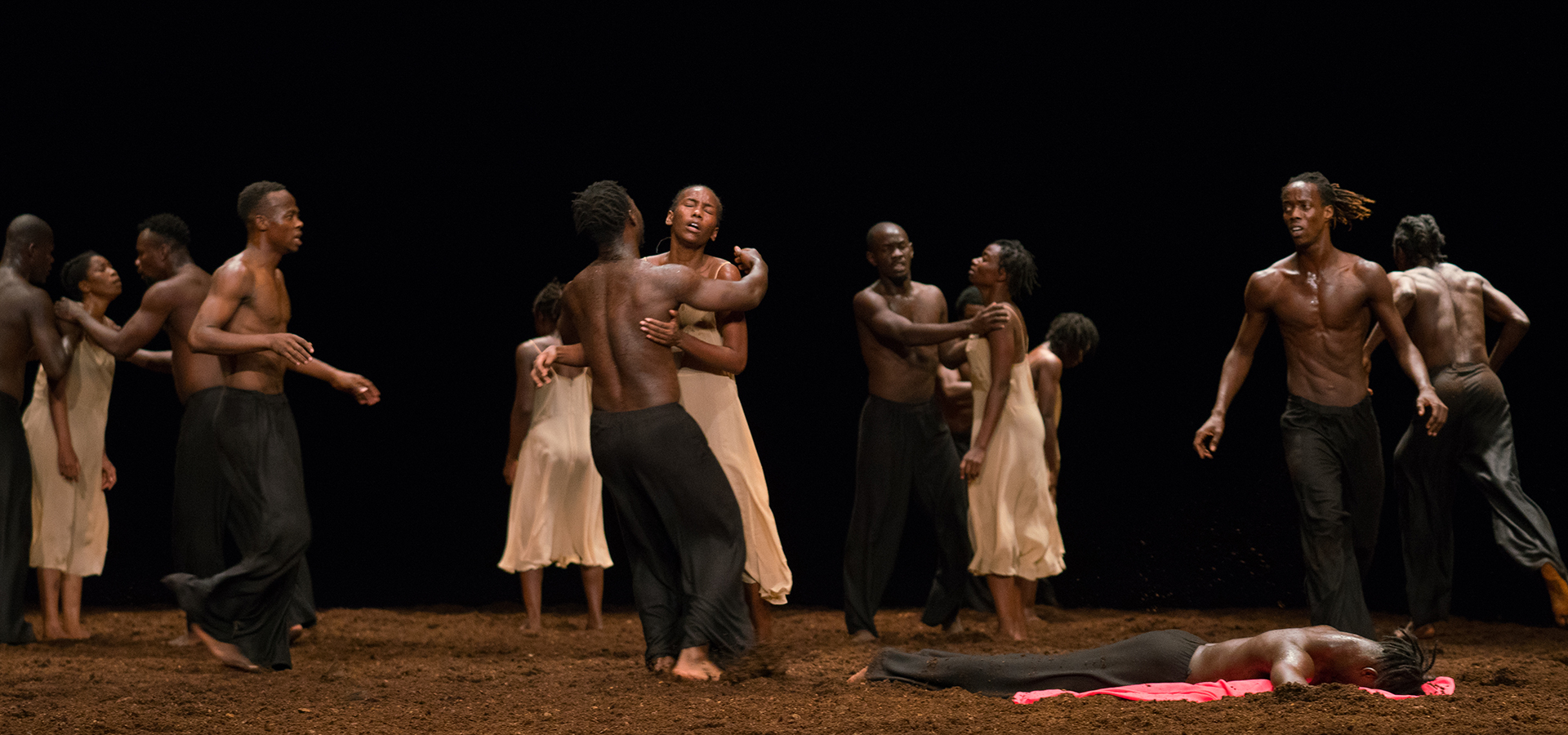
Q&A With Dancers of The Rite of Spring
“When someone asked why we were chosen, one of the restagers said it was because of a uniqueness within each of us.”
In between tours, the dancers of The Rite of Spring, which comes to Cal Performances on February 16–18, return to their home countries across Africa. We caught up with two of the dancers, Profit Lucky and Gloria Ugwarelojo Biachi, both from Nigeria, and discussed their careers as dancers and what it’s like being part of The Rite of Spring.
How did you start dancing and where do you dance today?
Profit Lucky: Dance has been my greatest means of communication, joy, and freedom, and has been a part of me right from birth. I started dancing professionally when I saw a post that said I could learn dance for a cheap cost, and I quickly grabbed the offer. Later on I moved to Ghana to further my university studies. Luckily, I met Valerie Miquel, who I consider my “dance mum,” and I worked, trained, and danced with her in a company for years before she moved to France. Currently, I’m not dancing with any dance company.
Gloria Biachi: At first I attended auditions across Nigeria, which boosted my energy and confidence, and kept me going. I discovered a dance school called the Dance Deal Foundation, where I did a three-year course, which helped me master the art of choreography. Now I’m a freelancer in Nigeria, working with dance directors across the country and internationally, and I facilitate dance workshops and awareness programs. This is a project that I think girls like me need and deserve, to share my experience and give back to the community that nurtured me.
How did you get involved in this project?
Profit Lucky: I got involved through Valarie Miquel and some dance friends I made in École des Sables in an exchange dance program in 2019. They all sent me the dance audition post for The Rite of Spring and they asked me to give it a try. I sent my application, travelled to Senegal, and did my auditions. Luckily (just like my surname!) I was selected.
Gloria Biachi: A friend who I met in a dance workshop sent me the application, saying “Gloria, I know you can do this. Go for it!” After being selected for the auditions, leaving Lagos to go to Senegal was a challenge. I checked in on the Goethe-Institut in Nigeria, and they sponsored me with the costs. The auditions lasted for four days, with hundreds of African dancers. In the end, 38 were selected, and I was among them, not because I was perfect, or had the best dance movement—when someone asked why we were chosen, one of the restagers said it was because of a uniqueness within each of us.
How does it feel to dance in Pina Bausch’s The Rite of Spring?
Profit Lucky: My experience has been amazing, magical, intense, filled with lots of learning and growth, and humbling. I got to know about Pina Bausch through my Ghanian friend, so it feels like a dream has come true. It feels very humbling to finally dance The Rite of Spring after so many years of watching videos.
Gloria Biachi: My experience has been a work of patience and trusting in the process. When the pandemic broke out, it was disappointing because we had done so much rehearsal to get ready for the tour. Now we’ve had performances around Europe; I take any opportunity to perform the work. It takes a lot of tolerance and patience to be able to dance this piece, and it takes a lot of ‘YOU.” This project is a legacy, a way of showing my versatility, and that I’ve come a long way. It speaks volumes on where I’ve come from and how much I can achieve.
What do you look forward to most about touring?
Profit Lucky: I am always looking forward to the physical challenges of the piece and how best it can help me progress and develop as an artist. I’m very much more open to different lifestyles, traditions, cultures, perceptions, communications, languages, foods, and histories of the different theaters, venues, cities, and countries we visit.
Gloria Biachi: I look forward to the wonderful audiences, the instant feedback we get from them, and connecting to many professionals around the world who ordinarily wouldn’t see my work. These are career-defining moments for a young girl from Nigeria, and it does great things for me and resonates with the young dancers I mentor. This tour keeps inspiring me every moment and every minute. I can’t wait to be back on stage!
 Profit Lucky is a Nigerian dancer who began his dance training in Nigeria, before moving to Ghana to train with Ghana Theatre & Contemporary Dance under the artistic direction of Valerie Miquel, where he was a soloist in two productions for the company. Profit was awarded a full scholarship to Eric Scott Underwood’s Online Summer Intensive Program and the Alonzo King Lines Ballet online summer program. Outside of Dance, Profit also worked as a model dance-model in Nigeria and Ghana, and completed an exchange dance program with École des Sables and Amsterdam University of the Arts.
Profit Lucky is a Nigerian dancer who began his dance training in Nigeria, before moving to Ghana to train with Ghana Theatre & Contemporary Dance under the artistic direction of Valerie Miquel, where he was a soloist in two productions for the company. Profit was awarded a full scholarship to Eric Scott Underwood’s Online Summer Intensive Program and the Alonzo King Lines Ballet online summer program. Outside of Dance, Profit also worked as a model dance-model in Nigeria and Ghana, and completed an exchange dance program with École des Sables and Amsterdam University of the Arts.
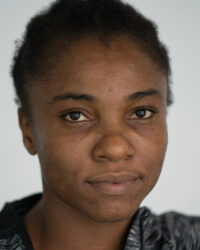 Gloria Ugwarelojo Biachi, who hails from Delta state of Nigeria, is a Lagos-based dance artist, teacher, choreographer, fitness instructor, actor, and costume designer. Her training includes several national and international residencies/workshops with choreographers and companies from around the world. She completed the AWA Dance mentorship program as part of the class of 2021. Her body of works include stints in theater, television, and motion pictures, and working with children of all ages. In 2021, at the Institute Francaise in Burkina Faso, her solo ILE made its performance debut at the Fido International Festival of Dance. Her latest acting credit is recorded in the Netflix original, Mystic River. Gloria just concluded an Artistic Development Residency at Dance Base Studio in Edinburgh in 2023.
Gloria Ugwarelojo Biachi, who hails from Delta state of Nigeria, is a Lagos-based dance artist, teacher, choreographer, fitness instructor, actor, and costume designer. Her training includes several national and international residencies/workshops with choreographers and companies from around the world. She completed the AWA Dance mentorship program as part of the class of 2021. Her body of works include stints in theater, television, and motion pictures, and working with children of all ages. In 2021, at the Institute Francaise in Burkina Faso, her solo ILE made its performance debut at the Fido International Festival of Dance. Her latest acting credit is recorded in the Netflix original, Mystic River. Gloria just concluded an Artistic Development Residency at Dance Base Studio in Edinburgh in 2023.
Related Posts
There are no related posts yet. Check back soon!
Photo Gallery: A Day in the Life of Les Ballets Trockadero de Monte Carlo
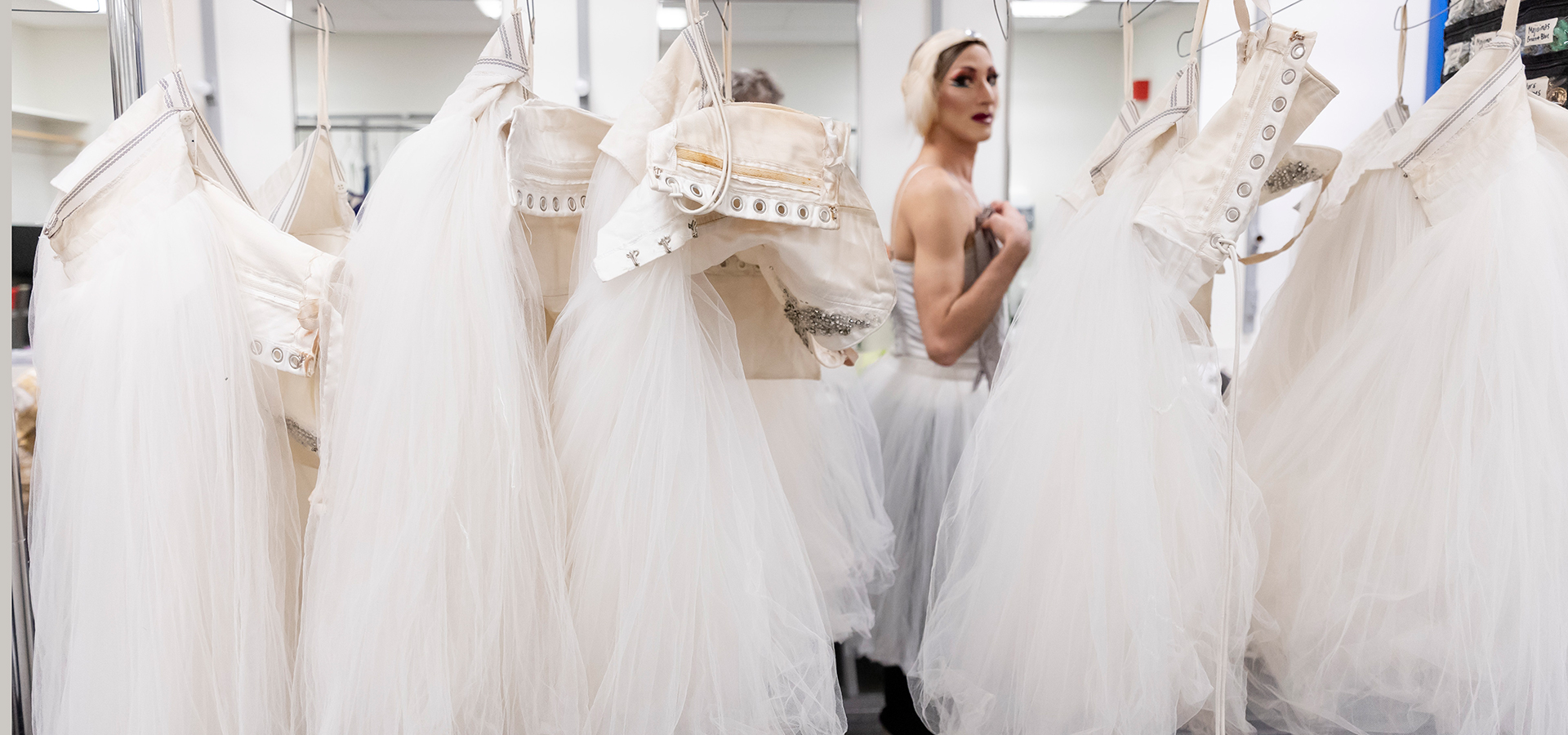
Photo Gallery: A Day in the Life of Les Ballets Trockadero de Monte Carlo
Capturing the embodied beauty, precision, dedication, and pure joy of the Trocks.
Photos by Brittany Hosea-Small
On Saturday, January 27 and Sunday, January 28, 2024, the world-renowned and Berkeley-beloved Les Ballets Trockadero de Monte Carlo returned to Cal Performances as part of their 50th anniversary celebration. An all male drag ballet company, the Trocks are known for their combination of laugh-out-loud comedy and their unrivaled technical skill as dancers. For the Saturday performance, Cal Performances had the distinct pleasure of commissioning photographer Brittany Hosea-Small to go behind the scenes to capture typically unseen moments in rehearsals, fitting, drag transformation, and more. In this blog, we have compiled some of the most compelling images that capture the beauty, precision, dedication, and pure joy the Trocks embody—moments that words alone could never do justice!
Thank you to Brittany for lending her artistic eye to this project, and to the Trocks for being such incredible, long standing partners to our Cal Performances audiences!
Related Posts
There are no related posts yet. Check back soon!


